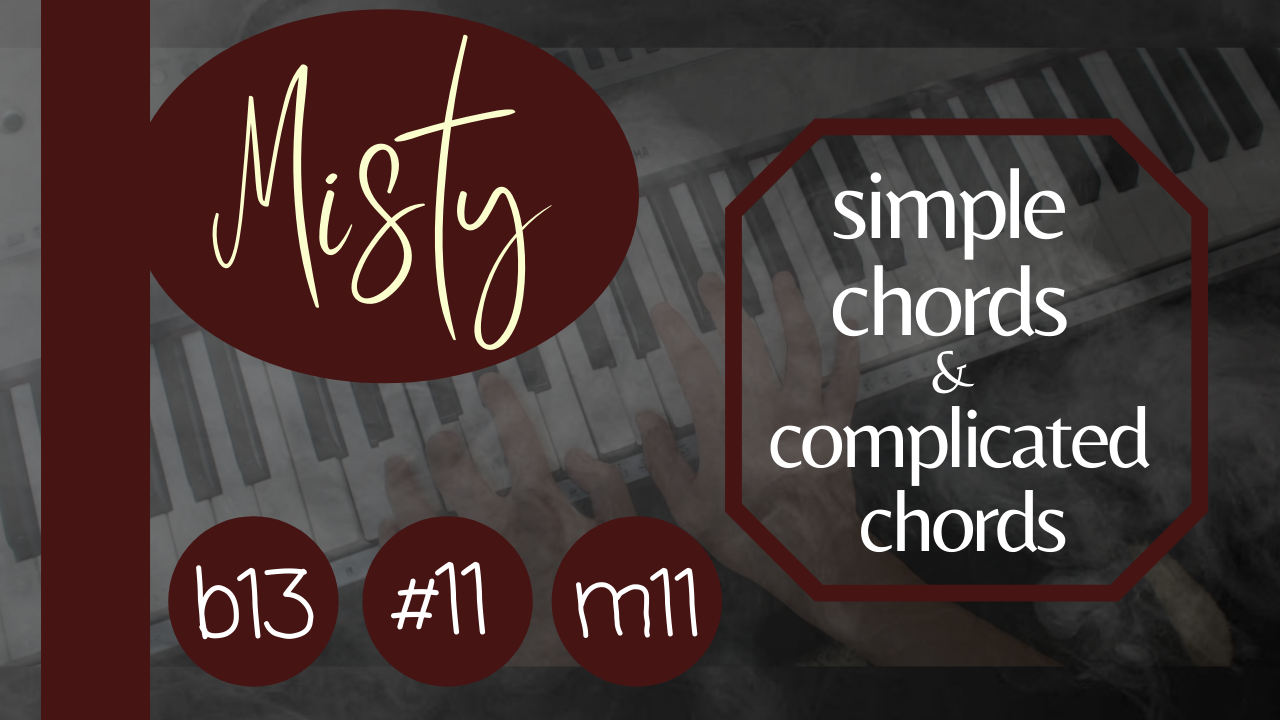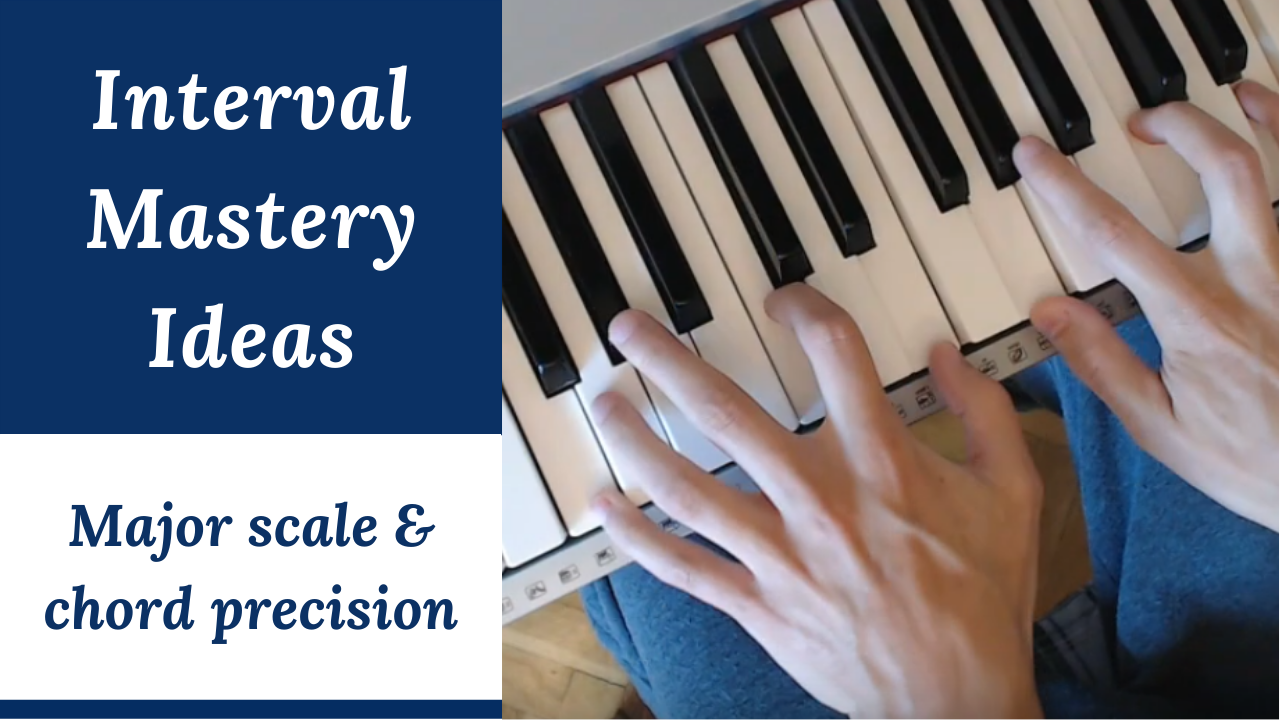
Theme: Most Recent Videos
Left Hand Ragtime Stride MasteryA Close Look Before A Real Rag! (1/3)
This is part 1/3 of learning the version of Black and White Rag that I first learnt when I was 14/15. This video looks at pretty much the only things you need to master in the left hand to be able to lay down a suitable syncopated accompaniment for the right hand to rag over... It will take a few days or weeks but personalise everything I demonstrate in terms of tempo, keys, chord types and vary up the things shown. Do it with your eyes closed as much as possible to real internalise the feel of the octave jump. When ready, enjoy part 2/3 (https://youtu.be/-WYw0FPRdRY)
Videos which have been published within recent weeks that you have probably missed because YouTube never notifies my subscribers. Be sure to have the notification bell selected to receiving all notifications because I upload 3-5 times/week and I'd hate for you to miss useful content!
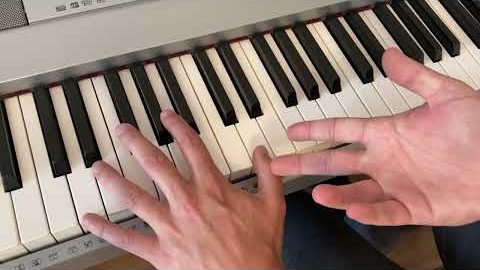
A Close Look Before A Real Rag! (1/3)
This is part 1/3 of learning the version of Black and White Rag that I first learnt when I was 14/15. This video looks at pretty much the only things you need to master in the left hand to be able
- Read More ...

Getting 'That' Sound (2/3)
The right hand syncopated pattern is easy alone once it's in your fingers; the hard part is combining it with the left hand (https://youtu.be/ZjN5ev1sRXE). Once you can do these, enjoy part 3 which you will be much more ready to approach: the Black and White Rag! (posting Sunday afternoon). Part 1/3 is here: https://youtu.be/ZjN5ev1sRXE

Acquire Chord & Key Mastery Too!
Before even contemplating playing songs with a left hand walking bass accompaniment, be sure to get the technique and feel down so the left hand can pretty much work on autopilot. Herein, I provide some ideas for you to play around with, including a 12 bar blues example to replay slowly and try out for yourself!

What I'll Be Doing For a Few Days!
Greetings. We meet again. For my first video back, I thought it would be a good idea to share exactly the kinds of things I'll be doing over the next few days as I return to my keys after 4 months
- Read More ...

Practise Structure & Left Hand Methods Too
Playing the blues isn't only about the notes, it's about how you play them and how you use space as a note too. In this video, I provide two right hand licks which can be used over and left hand pattern
- Read More ...

Autumn Leaves Context (2/2)
Autumn Leaves is just two 251s so rather than learning to improvise over the song, learn the improvise over the 251 which appears in so many other songs. Herein, I show the three steps to improv: chord tones, notes of interest
- Read More ...

Using Autumn Leaves (1/2)
Autumn Leaves is a very easy jazz song because it's just 2 sets of 251s, one onto the root and one onto the 6th. In this video, instead of worrying about the melody, learn to enhance the 251s because then you
- Read More ...

Learn 12 New Chords!
There are a LOT of chords. Herein, I show my favourite one in each key so you are not too overwhelmed. I have another video provided here which shows the most common chord types in each key which is more than
- Read More ...
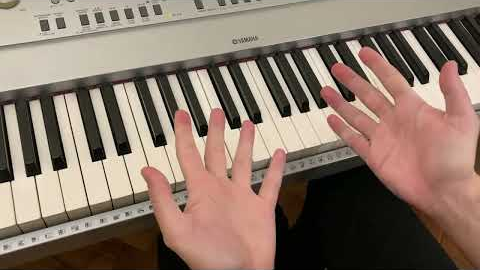
Personalisation & Precision (LH/RH)
Just a little reference video for how my fingers naturally fall on the major scales. Don't aim to play them a million miles an hour; focus on precision and endurance. It's a work-out which also helps to reinforce these all-important shapes. Make sure also to warm up your hands physically before doing this for even more comfort.

Such an Easy Jazz-Based Tune!
Although these Christmas songs are very pretty, so they're easy that you'll have them in your fingers in no time. This one follows the infamous 1 6 2 5 progression and of course goes up a fourth via a 2 5 1... nothing new there then! I discuss a few improv ideas for some sugar on top.

Tastier Chords, Progressions & Some Other Stuff!
This song is not just a Christmas song, it's a jazz song! I wish it wasn't because it's a perfect example of a jazz song: 6251s, up a fourth, floating 251s... so please apply what I discuss in this video to
- Read More ...

251-Based Ideas for the Right Hand
A good way to get into improvisation is to start using chord tones. I have some videos on this. It is difficult, though, if you can't find the chord tones quickly in the RH! So I have a little melodic exercise
- Read More ...

Making Your Own - Feel Then Play (2/2)
There are already endless videos and articles online showing you the most common chord progressions and in which songs to find them so I wanted to do something different... a bit more danthecomposery, so I came up with this video idea:
- Read More ...

A Meditative, Emotional Approach (1/2)
I have always felt that ear training is a bit of a party trick. After all, you can just find the chords to a song or the melody from the sheet music, or by going to the piano and 'finding the
- Read More ...

Liebestraum Example (Performance Techniques)
Sometimes, you want to freestyle your own version of classical repertoire. It's common to want to do that! So I decided to make a video using the first part of Liebestraum by Franz Liszt. Basically you study the chord progression, identify
- Read More ...

Each Finger at Each Level
Often, your fingers will be uneven in power when they touch the keys. This video helps to fix that by having you train each finger to know what it feels like to play very softly, normal and very loudly. Filling in
- Read More ...

Examples using C & Eb
Once your major scale shapes are pretty clear in you mind, the next step is to understand note values; the idea that one note can be multiple values depending on the key it is in. This is only possible when you're
- Read More ...

Two Melodic Extension Games
You may think extensions is an overwhelming topic but I'd like to show you that it isn't. You simply use the major scale to identify the 2nd, 4th and 6th which are the same notes as the 9th, 11th and 13th.
- Read More ...

It's All About the Octave Jump!
It's a fancy technique which fills solos and helps when accompanying a singer very well but often the pianist cannot execute it well. In this video, I explain the important of the octave jump behind rapid arpeggios. Emphasis is on the
- Read More ...
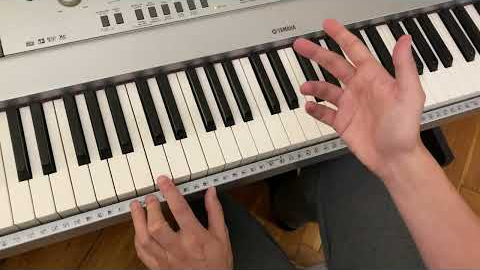
Jazz, Classical and General Piano
When not learning repertoire or major scales (!), it's a good idea to practise common piano techniques because you are sure to encounter them in repertoire eventually. Even if you want to improvise, these techniques are unavoidable. I hope you'll personalise them and master the ones you like the most.
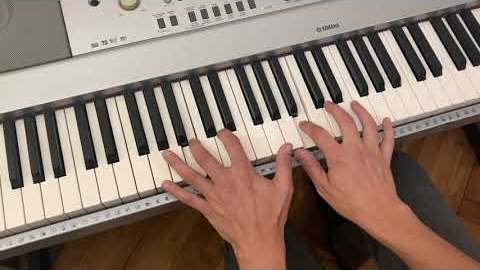
Freestyling & Left Hand Melodic Emphasis
Usually, you play chords with the left hand and 'stuff' with the right hand. I thought I'd switch them over for this video so you play melodies with the left hand and a chord with the right. We're only focusing on
- Read More ...

You NEED These! M7, m7, m7, M7, 7, m7, m7b5
Once again, another play-along video, this time to get you to absolute diatonic chord mastery. Through every key, I repeat the chord type pattern for all 7 degrees of each major scale and play the chords slowly, with both hands, so
- Read More ...

Personalised & Interesting Results!
Sometimes you don't want to play a song or look at lead-sheets, you just want to make your own interesting progression. But how? First, throw all theory out the window! Just four notes; these represent the bass/key movement of the chords.
- Read More ...

Chord Tones, Chromatic Connections... (2/2)
Let's Do It, Let's Fall In Love is a very accessible song for jazz beginners. Assuming you have enjoyed part 1/2 which focused on the chords and progression of Section A, herein, I discuss the way a melody is often constructed
- Read More ...

The Progression! (1/2)
Part one looks at the terribly easy and accessible Section A of Let's Do It, Let's Fall In Love, a charming number by the one and only Cole Porter (1928). Herein, I demonstrate how one goes about identifying the chord progression
- Read More ...

Play Along With Me to Mastery (1/2)
There are two ambitions I have with this channel: for you to have major scale mastery and know all chord shapes in all keys. I already have a major scale mastery playlist linked below. I also have a chord video in
- Read More ...
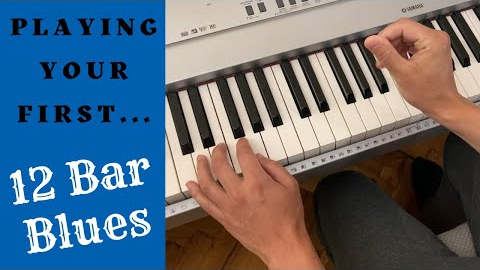
Written for Beginners (Choose Your LH Style!)
I do love a blues. Who doesn't? This little educational piece I wrote years ago but thought it was time to update and present it to you in a shorter, better quality video. It purposefully includes common RH techniques and is
- Read More ...

Helping You Become Fluent
Most chord progressions (80%+) are based on the cycle of fourths. Each new key a fourth up from the previous adds one more flat to the key, until Gb. From Db/C#, however, if you continue in fourths, you will actually start
- Read More ...

A Scale & Chord Challenge
You don't necessarily stumble because you're not technically good enough. You stumble because you don't know what's coming next! Why does this happen? Because you get too caught up with what you're playing at the very moment and your brain just
- Read More ...

Enjoying Sound Dissipation...
Students often get frustrated that they can't do technical exercises very well or play repertoire how they would like (and easily could). Often, impatience is behind this and I don't mean impatience over weeks and months but over seconds and minutes!
- Read More ...

Note Value Awareness Has So Many Benefits!
This is a very useful exercise that you can also do away from the piano for internal piano mastery but when at the piano, it's nice to play up the scale too because you get to hear the note values, which
- Read More ...

1/2 - Swing Not Straight!
First I play the first two parts (you can work out the third on your own if you get that far!) and then I give you the one main right then left hand technique behind all of ragtime so I hope
- Read More ...

Melody to Chords or Chords to Melody
Assuming you've enjoyed and played around on your own what I discussed in part 1 so that you can experience the different feeling part 2 will give you, for which you will remove all restrictions and either play a bunch of
- Read More ...

Theoretical & Restricted
I propose three methods for composition: theoretical with restrictions and confines / trial and error / inspirational source (away from the piano first). Each of the three videos of this little series will provide some spontaneous examples to demonstrate how each
- Read More ...

Cheat Pattern on the Keys!
Usually, I never encourage learners to cheat their way to knowledge but in this case, I can make an exception. You have to do whatever it takes to memorise and internalise the 4ths because they're behind almost every chord progression and
- Read More ...

Triads, Octaves and Intervals
There's only so much you can do with the hand on the piano: single notes, two notes (an interval), three or more notes (a chord), octaves and all of these either as a block or individually (think arpeggios and broken chords).
- Read More ...

Combine with Major Scale Mastery
You need to spend time on left hand techniques, away from repertoire, since they appear in all repertoire. Use these ideas as you wish, at your own tempos, with your own chord types and in all keys. Make sure you play
- Read More ...

6251 Jazz Pattern Application
The 13th and #9 voicings share the same notes because of the tri-tone difference between their owner keys. C13 is Bb, E and A... the same notes as Gb#9... C and Gb are a tritone apart. If you descend chromatically with
- Read More ...

625144 (Left Hand)
As requested, a quick look at root position and then inversions with some embellishments for the 625144 progression in the key of F. Whatever progression and chord types you are playing, major scale mastery helps you to effortlessly slip from chord
- Read More ...
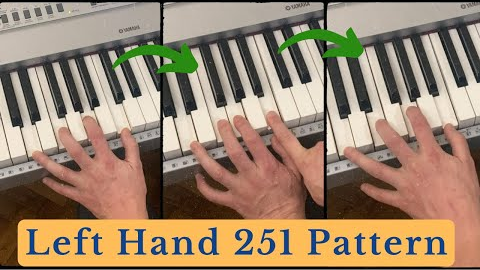
Playing Without Thinking
Even the greatest jazz pianists had patterns they used often: you can detect Oscar Peterson within ten seconds, for example; he had his own licks and voicings which are instantly recognisable. For us mortals, this is also possible. I give you
- Read More ...
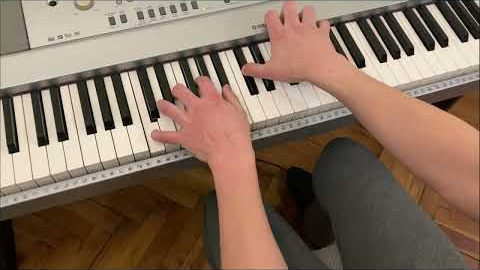
The Sweet Chords of Section B
One of the first songs I ever learnt, Moonlight Serenade is a lovely Glenn Miller tune I play in F (but the original is in Eb if you go and listen). After a quick performance of both A and B sections,
- Read More ...

All My Tomorrows - Section A
I'm going to make lots of videos in this style since I know that most people don't care to learn a whole song but highlighting parts or sections of a jazz song I like and explaining why, should be more interesting
- Read More ...

Poking and Jumping
Poking chord tones helps to train your mind to see the shape of the chord, within the key of the chord, and helps with seeing inversions very quickly. The second exercise, chord jumping, helps your fingers get used to staying in
- Read More ...

Practising Fancy Chords
This game is down to your choices. It encourages you to identify chord extensions and to discover which note combinations work to make fancier chords. Good chord enlightenment! Basically, you pick a top note and move up chromatically 2 octaves below,
- Read More ...

Ten Fingers, Not Two Hands
This topic has always interested me because it is so common yet so easy to fix but for some reason, it is a struggle students have for years! Hand independence isn't really the write term; it's more 'hand togetherness'. It's easy
- Read More ...

Multiple Song Analyses - Podcast Episode
Instead of doing an single-song analysis, of which I have many, I thought it would be a nice change to do a podcast episode in which I show many jazz songs and how you would go about studying the lead sheet
- Read More ...

Slow Precision Required!
Rather than hand 'independence' problems, let's think about this issue as hand 'coordination' problems, which is really what hand independence has somehow come to mean. The more variety of exercises you do to overcome this element of piano playing, the less
- Read More ...

Same Chord Through the Scale
Need to master your major scales AND some chord types? You'll love this game. Not only can you reinforce the shapes, you can choose any chord type you'd like to work on and play it on each note of the major
- Read More ...

Modify Key, Chord & Time Signature!
Often the left hand gets neglected so here are some melodic solutions. You will find these few techniques in real repertoire so don't see them as pointless exercises! Be sure to do them in different keys and time signatures and by
- Read More ...

Major Scale Tennis Exercise
Knowing note values is important for fancy chords, inversions, improvising, composing, remembering melodies and a few other things. You can play major scale tennis away from or at the piano which is convenient. It's a major scale mastery game (always important!)
- Read More ...

Mastering A Jazz Chord Progression
All The Things You Are is a great song to learn the most common elements of jazz chord progressions. It's based on a 6251, then up a fourth, then a floating 251 to the 3rd. This repeats a 5th up from
- Read More ...
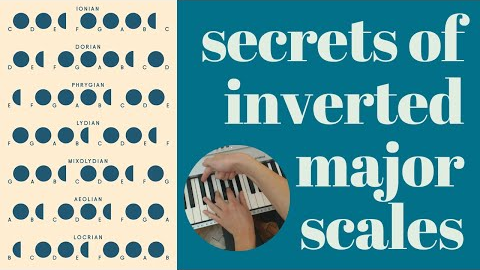
Major Scales & the 1357 Template
Time for an updated video on modal theory and diatonic chords. If you know major scales (which you must!!!), then you inherently know modes because they are simply major scales inverted 6 times (first position is not inverted, of course). Diatonic
- Read More ...

Five 5-Min Videos for Beginners - 5/5
Not enough piano students compose because it is believed that oodles of knowledge and technique are required. You're not being asked to compete with Liszt and Chopin; just cute little melodies and chords is all we need! In my irrelevant opinion,
- Read More ...

Five 5-Min Videos for Beginners - 4/5
Hopefully you've enjoyed and got comfortable with the content of the previous three videos already so that this video isn't too difficult. Herein, I encourage you to 'improvise'. Not in a jazz way but in terms of playing any chord type
- Read More ...

Five 5-Min Videos for Beginners - 3/5
Your major scales are good. You've been playing around with chords. I give you a few more chord ideas herein but then I give the best finger independence exercise known to mankind: the butterfly technique. Do it eyes closed if you
- Read More ...

Five 5-Min Videos for Beginners - 2/5
Moving on from your new major scale mastery and comfort, I now introduce the major and minor triads, along with some ways to play them: as block chords, broken chords or rolling arpeggios. Get used to playing them rhythmically all over
- Read More ...

Five 5-Min Videos for Beginners - 1/5
For whatever reason, you want to start playing the piano. No matter what music you'd like to play or compose (!), you need to know your major scales and get used to seeing the whole piano as that key. Also, start
- Read More ...
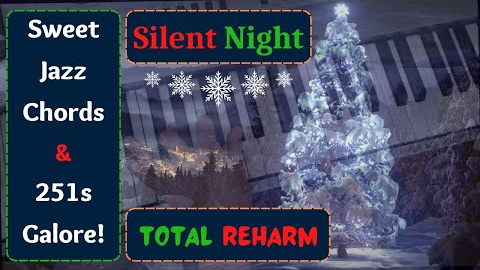
Fancy Chords, 251's, etc
The fact this is a Christmas song doesn't matter. To reharmonise a song, you're often looking for 1 chords (major 7ths) and to arrive at them via 2-5s. In this video, I take the very simple 1 4 5 song Silent
- Read More ...

Priority Learning
There are a LOT of chord types but it's fair to say that you don't need to learn them all immediately in all 12 keys, so I spontaneously decided to go through each key, from C to B, sharing with you
- Read More ...

Jazzy Performance & Brief Analysis
Yet again, another easy 36251-based song. The facts it's a Xmas song doesn't matter: it's the jazz chord progression which appears in 80%+ of jazz realbook repertoire. The melody is so well-known that you can easily work it out by ear so I focus on the chords and some tasty variation you may enjoy... after a performance, of course!

Follow Along w/ Me
To get by with jazz repertoire, you need to know the 251s instantly in all 12 keys (just because a song is not often in C#, for example, doesn't mean you shouldn't learn its 251 because it still appears in 'floating
- Read More ...

Section A Chords and Melody - Part 1/2
As with every new song, I got it onto my internal jukebox since I didn't know it at all so I listened to a few versions and read the lyrics. Once that was done, I found the leadsheet and analysed the
- Read More ...

You Won't Regret Learning This Little Ditty
Some songs I wish I'd written. This is one of them. Such a nice use of the 1 5 1 5 1 5 chord progression using an augmented on that 5... then a half-dim on the 3 and a b7 on
- Read More ...

What's The Next Chord???
Choose any two keys two alternate between, with any chord type (the same or different). Then add another not and chord type, then another. Personalise the whole thing, especially in terms of what chord types. You may do it all as
- Read More ...

Phrasing from Each Beat
Instead of playing anything anywhere with no structure, consider this exercise in which you lay down the left hand accompaniment of your choice and then play one, then two, up to 7 notes of the blues scale but starting from first
- Read More ...

Stride & Freestyle
If you don't have much repertoire yet - and don't know too many chords - then let this video be your guide! Choose a chord type (ones you know and those you don't, so you learn them) and play them with
- Read More ...

Next Two Sections - Ear Only (2/3)
Hopefully you have enjoyed part 1 and are ready for this nice easy part 2 section which itself contains two sections. This is all only possible because I have listened to many versions many times and can anticipate what chord should
- Read More ...

No Sheet Music, Ear Only (1/3)
I'd like to thank everyone for your feedback on content. A common theme was: showing how I learn an personalise non-jazz songs and making them jazzy. This is a song I've always wanted to play so I spent a few hours
- Read More ...

Such A Lovely Chord Progression!
Almost every jazz song is based on some variation of the 6251 progression and this song is no exception. I provide the basic version and the nicer chromatic climb version. Two sections, very easy to memorise away from the piano. Easy melody to add on by ear. No need for lead sheets!
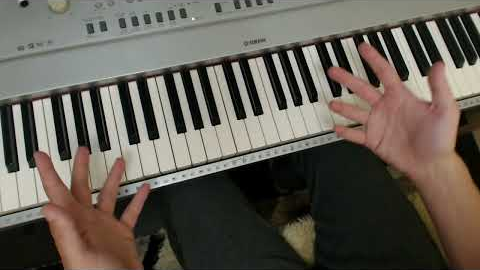
Endurance w/ Chromatics, Scales & Chords
Very often, I'll do the stuff in this video for 10-20 mins, or maybe just one of them for 10 minutes. This is why and how I know my chords, scales and have finger flexibility, rapidity and precision. Thought I'd share
- Read More ...

Playing One Scale Over 7 Chords?
It's important to know have mastered the diatonic chords for the major scales. It's one template applied to all 12 keys. In this video, I demonstrate how you can simply move through all 7, in order, while playing any melody using
- Read More ...

Cycling Through the Keys for Mastery
Come on, it's about time you really got good at recognising the most popular chord types in all the keys so that you can take on any music you wish! This chord game encourages you to go through all keys following
- Read More ...

Pennies From Heaven - Tutorial
Lovely song, easy to learn. I listened to some classic recordings to get the tune into my head (each one with a slightly different melody!) and then found the chords by ear. You can find other chords (but mine work!) on
- Read More ...

Learn It in Real Time with Me
Use jazzstudies.us to find the free leadsheet but you shouldn't need it really since if you know the melody, you can easily put the chords under it. I learn this from nothing to full song in 12 mins (quicker in real
- Read More ...

From Easy to Fancy in 10 Minutes!
Stride appears in many genres of piano music: accompanying singers, solo piano, classical, romantic, pop; it's also just a really good technical exercise for precision. Herein, we go from simple pinkie bounce all the way to open octave chromatic connections! I
- Read More ...
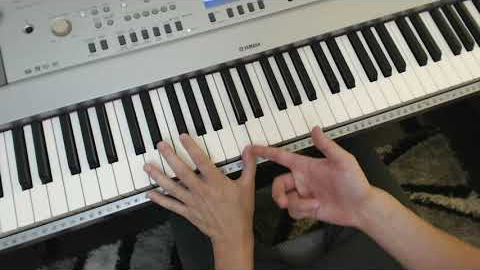
Every Finger Combination Ever Needed
No matter your repertoire choices, or even ability, getting comfortable with each finger's stretch to every other finger is very important. It will help you feel a lot more comfortable at the piano, whether it's scales, chords or melodies. The more
- Read More ...

Chord Progression Analysis (Performance Incl.)
My previous tutorial to this is about 7 years old (!) so I thought I'd make an up-to-date one which was shorter and better audio and video quality. I wanted to get straight to the point with this: learn jazz reperoire
- Read More ...

Endurance Over Speed!
Herein, I share three useful finger independence exercises which also drill major scale mastery and precision. The last one you may have seen before but it's really my favourite one and the most beneficial for all finger combinations. As per the
- Read More ...

LH Accompaniment & RH Alternations
I wrote Golden Birds years ago to represent the birds which flock above the parliament building in Budapest and get lit up thanks to the powerful yellowish lights. It's a lovely sight. Herein, I teach the first part because it's a good finger alternation exercise using 1 and 3 then 2 and 4. Hope you enjoy it!

Trial & Error, Theoretical & Away From Piano
I wrote quite a few compositions before I started this channel so I thought it was a useful name to it as my name and what I was doing! My compositions are available via the link below. I hope in this
- Read More ...

M7, m7 & 7 Extensions
If you have repertoire, definitely try to embellish the chords this way. If not, you can still play a mix of these chords and get some really tasty sounds! I provide three to get you going: LH = M7 (1356) RH
- Read More ...

Refining & Understanding the Results
I came up with game ages ago and made a video on it but it's lost in the abyss that is YouTube so I thought I'd do it again for you. The basic idea is to choose how many notes will
- Read More ...

Any Notes, Any Chords, Enjoy The Results!
I found a bunch of chords in my notebook and didn't remember what they were for... then it hit me! Ah yes, I wanted to make a video a few years ago on how you can get into composing (or at
- Read More ...

Shapes & Fluency Mastery
I've mentioned these ideas before in other videos but never brought them together in one same place, so here we go. Three of my most favourite chord mastery recognition and playing exercises. All personalisable of course. The first is the ascending
- Read More ...
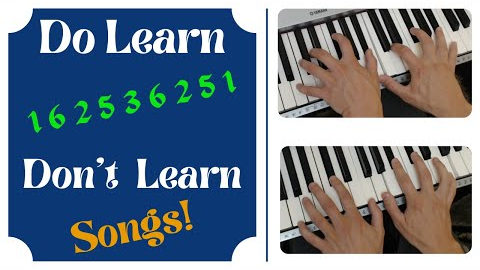
The 36251 Progression?
Herein, I play four old jazz tunes which are all based on the 1625 36251 progression to demonstrate that it's not the song but the progression you need to learn! I could have chosen 100 other songs to make this point.
- Read More ...

Floating 251 to 4, 4dim, 36251
Using the A section of The Nearness of You, I demonstrate the much-used 251 onto the 4th progression. Get used to floating 251s onto anything but the root since they happen all the time in jazz repertoire. All only possible with chord type and major scale mastery so be sure to enjoy the following playlists...

Sus4 and Augmented Triads (3/3)
Third and perhaps final video (I may do a jazz chord one soon, depending on feedback) in which you are to once and for all learn chords in all keys by playing along with me, slowly. You can't get more straight
- Read More ...

6th, m6, Whole Dim, Half-Dim (Part 2/3)
Following on from Part 1, I provide you with the next 4 most important chords to know in all 12 keys: 6th, m6, whole diminished and half-diminished. You'll master the templates, see the tiny differences (one finger) between them and then,
- Read More ...

The Four Primary Chord Types (1/3)
My hope is that you'll acquire a few skills herein: learn the four primary chord types, play them with both hands, be able to go through them in all twelve keys and finally, do all that without following along with me! It may take a few tries but do try! This series contains three videos.

Acquiring the Feel of the Interval
Just some little ideas and demonstrations to encourage you to play octaves and become confident with feeling this very important interval. There are three ways to play an octave and 4 applications, all of which I demonstrate. I encourage you to
- Read More ...

Eyes-Closed Precision
Often, exercises are in keys or with chord types and never with only the black notes so let's change that! It's nothing earth-shattering but just a nudge to encourage you to develop a precision with the black notes in terms of
- Read More ...

60 Second Ideas (Part 3/3)
This is the third and final part of the reuploads of a far too long video from 2019 that you may never have seen but with the sound enhanced and the length, originally 31 minutes, cut down to three videos of
- Read More ...

At & Away from the Piano Ideas (Part 2/3)
This is part 2 of a reupload of a far too long video from 2019 but with the sound enhanced and the length, originally 31 minutes, cut down to three videos of around 10 mins each. I propose 5 ideas at
- Read More ...

At & Away from the Piano (Part 1/3)
This is part 1 of a reupload of a far too long video from 2019 that you may never have seen but with the sound enhanced and the length, originally 31 minutes, cut down to three videos of around 10 mins
- Read More ...
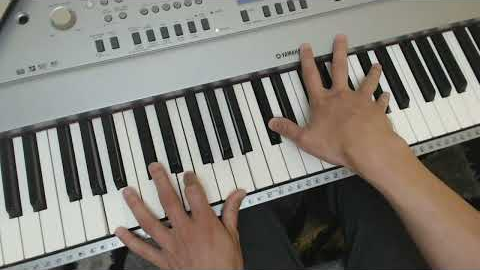
A 5-Bar Exercise
Concluding my little composition series looking at some different feels and techniques, we explore portraying the swing feel with the left hand and its chords, as well as the right hand and its melody, since both portray rhythm! I provide some
- Read More ...
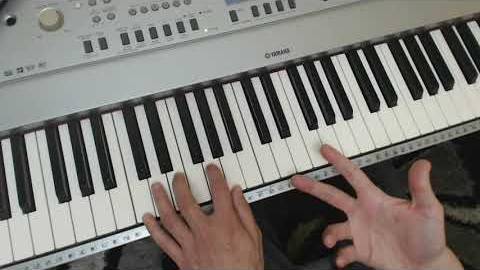
Mini Melody & Chord Practice - (3/4)
Taking my little melody and chords composition, let's apply a Bossa Nova rhythm to it. All rhythms are portrayed by the fingers on the keys; the melody or chords don't impact the rhythm at all. Herein, I provide a left hand
- Read More ...
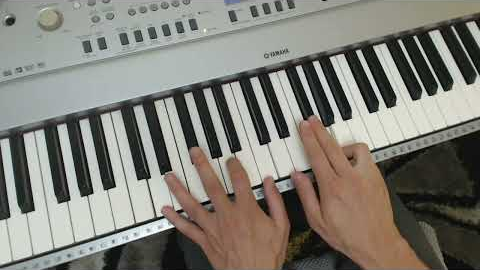
Fingers as Drummers (2/4)
Using the melody and chord progression I presented in part 1, link provided, I give one left hand pop piano pattern and two (plus a bonus) right hand things - one is to play the melody on top of the right
- Read More ...
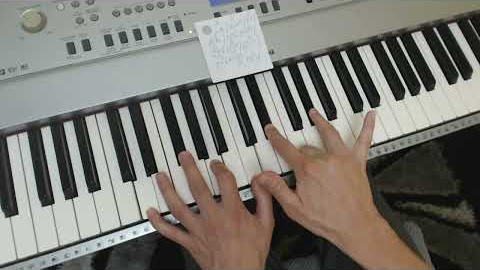
Easy to Learn & Play! (1/4)
Composing your own melody is fun and useful. You then put your own chords to it and would do well to apply different rhythms. If you can't yet do that, then I offer my own melody and chords for you to
- Read More ...

Two Variations to Practise
I'm always thinking of new ways for you to learn chord types in different keys since they're so important to playing anything, of any genre, on the piano. This idea starts with taking randomly 4 notes then, with progression of difficulty,
- Read More ...

Dissection Philosophy
It's hard, I get it. Herein, learn the process of achieving total hand coordination in boogie-woogie. First, get the LH down so well that you can talk to someone or watch something while it's happening. This is removing all conscious interference.
- Read More ...

A Chromatic Challenge!
I'm always pushing chords and have a specific playlist for chords because they're so important; from basic triads to complex jazz extensions. I really encourage you to work through that playlist, link below, to become super familiar with chord type templates
- Read More ...

Melodic Chord-Based Exercises
I just want you to get really, really good at the piano. This involves efforts from you to know a good number of chord types AND how to play them in all keys. It's a mix of instant recognition, major scale
- Read More ...

Improvisation Hierarchy of Notes
It's been a while since I've made a video for this playlist so as part of promoting it, I propose this video which answers a common question: how do I improvise? I give you the three steps which avoid getting stuck
- Read More ...

Hand Coordination
I like these two exercises because you get chord type, finger independence, major scale and coordination practice, all in one! The first one is great as a stylistic trait and the second is great for landing confidently on a chord type. Both give left little fingers a work-out, too!

4 Left-Hand Techniques to Get Down 1/3
Many people dive into Boogie-Woogie with two hands but I propose getting a few/or your favourite left hand patterns down first, in a few keys, eyes closed, to make sure your left hand has the correct and comfortable fingering for the
- Read More ...

Improvise for Hours! 3/3
I spent a few hours looking at loads of boogie-woogie and blues videos, as well as some classic records to identify common traits of this style and settled upon 5. You are to personalise them and try them with your
- Read More ...

Ready for a Challenge!?
Technical exercises serve more than the purpose of being able to 'do' the exercise; they help with precision, touch, orientation and many other things. In this video, I highlight in particular finger and hand independence by encouraging you to be able
- Read More ...

Personalise What I've Created! 2/3
I thought I'd give you a composition which involves many common elements of blues and boogie piano. I'm more than happy to make a part 3 which takes this topic further. Part 1 encourages you to get down some left hand
- Read More ...

At the Piano...
This is in no way suggesting that you must or want to 'play like me'. When I hear or read this sentence, what is meant, what is implied, is: how can I acquire your precision, dexterity and fluency? Well for many
- Read More ...

Using Your Brain a Bit!
This video is more like a podcast but I do touch the piano sometimes, as well as demonstrate my physical finger stretches. The content of this episode is on encouraging you and showing you how to use your four internals: piano,
- Read More ...

Bossa Nova Jazz
Hopefully you've already enjoyed Part 1 and got the melody internalised. If so, get used to dissecting the chords in the way presented in this video... the try to put everything together! I provide some useful progression section ideas to drill them (even try them in different keys because it's the number progression not lettered progress which is important).
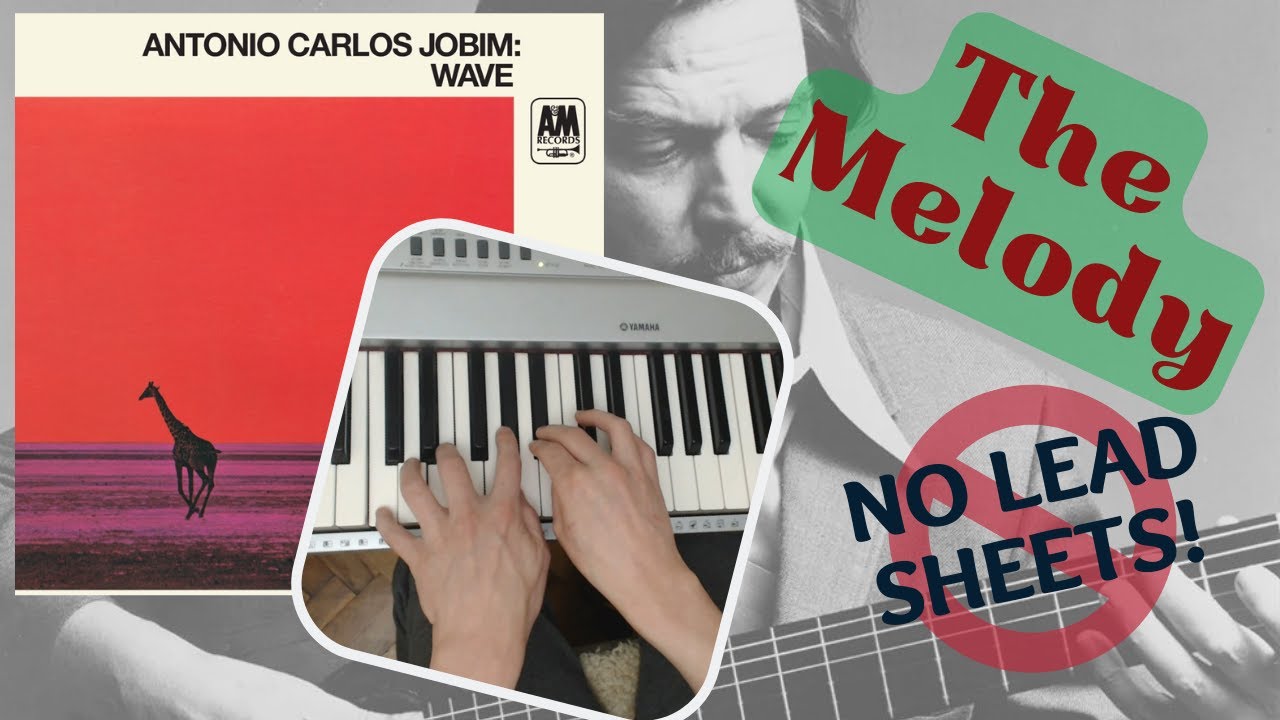
Bossa Nova Jazz
With the piece firmly on your internal jukebox, get the melody down. Often with jazz, you'll not need sheetmusic, just find the melody by ear at your instrument. Orientate yourself in the key of F for this and be sure
- Read More ...

Natural Fingering!
Natural fingering all the way! Thanks to a request, I provide an idea where you play the major triad (use any chords you want, though) and, in all twelve keys of course, you'll move the 3rd and then the 5th up
- Read More ...

Finger Independence & Chords
Technical exercises don't need to be done exactly as you find them. Herein, I chose three at random (and added one at the end spontaneously) and demonstrated how you might personalise them. Playing the piano is not only about repertoire; you
- Read More ...

Powerful Ballad Technique
Twenty years ago, I worked in a music shop. A guy came in and said he wrote for Celine Dion. He showed me his technique which I present to you in this video. I never did find his name in any
- Read More ...

Fluently Moving Through Them All?
Knowing the 251s instantly is very, very helpful when it comes to memorising jazz songs especially. Herein, I propose you learn them but add a few more layers: rhythm, LH/RH techniques, little melodies, etc. However, start with one hand getting the
- Read More ...

If This Were My Last Video...
Don't worry, this isn't my last video; it's just a thought experiment: if I had to leave you with one important thing to work on above all else, what would it be? Major scale mastery with key orientation. It's not a
- Read More ...

Beats and Muddiness
Using the pedal can often cause problems. I always used to say "lift it up when it gets muddy", which is true but I wanted to give two more specific methods to help you with not sounding muddy! One is highlighting
- Read More ...

Water Pianism Syllabus References
This video contains the most popular technical exercise I encourage people to master and can be found in my Water Pianism Syllabus. Even if you're not interested in that (link below to WP Overview Document), you'll still find these very
- Read More ...

A Beginner's Look
Behind every song are 90% diatonic chords. You need to be very familiar with these to help you tackle new repertoire, of any genre. Herein, we only discuss triads but I have a video on the 4-note chord version linked below.
- Read More ...

In Order of Appearance
I hope you will enjoy Part 1/2 which includes the first seven songs from the original Mary Poppins film. It got longer than expected so I cut down on the duration of each song. Part 2 will be linked when
- Read More ...

Just Master These!
There are a LOT of chords to learn in all 12 keys and that can obviously be overwhelming. This video gives you 2-3 of the most common chord types in each key... but understand: not the SAME chord types always
- Read More ...

Money Heist-Inspired Piano Tutorial
I already knew this song from hearing it in a French film many years ago (Hors de Prix) so when I heard it in Money Heist recently, I was pleasantly surprised by the totally different style and was instantly inspired to
- Read More ...

Recognising 6251s & Performance
You really need to know the song you want to learn on your internal jukebox before you even think about going to the piano to learn it. In this video, I apply that fact and learn, by ear, I Can't Get
- Read More ...

A Little Finger Work-out
Sometimes, well, quite often, it's required of you to play a chord 'under' the melody note. This little video gives you a technical exercise, with a few variations, on strengthening your right-most right hand fingers to get used to playing melodies
- Read More ...

Maybe You Can Learn Something From Them?
Just an innocent idea, plus a trip down memory lane for me: I play the first four songs I ever learnt 20+ years ago and you ask any questions about how I play them (or how to play them specifically).
- Read More ...

Easy Progression, Tasty Chords!
Lovely song. Nice common chord progression. Easy to master. You can learn the melody in your own time but I mention it sometimes. Primary emphasis is on the chord progression. I also offer some nicer chords without getting too complicated. Make sure it's on your internal jukebox before you attempt it!

A Look at the Chord Progression
After You've Gone is a very flexible piece in terms of chord choice, melody and rhythm. You can almost play it how you want! Herein, I just go through the chords I use to play it. You'll pick up the melody
- Read More ...

All the Things You Are (Demo)
I really want to help you play all the pieces you want when it comes to jazz. A common problem is that when you look at a lead sheet, it's just a bunch of chords and, if you're lucky, the single-note
- Read More ...

Both Hands, Multiple Keys
Sometimes, you need a little video with one simple exercise to add to your arsenal: this is it. Just choose a chord type and whatever the top note is, come down that key's major triad and play the same chord type from this new key. I give three chord demos. Both hands together, eyes close, staccato always best!

Nothing to Do with the Piano!
Obviously you'll practise this technique at the piano but once you've got the feel, you can drill it away from the piano as you walk, tapping on your legs or table, etc. First, get the technique down in straight time
- Read More ...

Please Spend More Time on Endurance...
It's great if you know lots of technical exercises but too often overlooked is the need for endurance; to play them for longer, not for speed but to get those fingers working and those tendons warming up and flexible. It need
- Read More ...

Note by Blues Scale Note - An Excellent Exercise
I'm doing all I can to help you play nice jazz chords and learn jazz repertoire, amongst other topics but really, the jazz theory don't mean a thing if it ain't got that swing so this video is another attempt, influenced
- Read More ...

One Simple Exercise Slow & Fast
This new playlist will contain videos which help you jazz up pop music or otherwise non-swing music (could be classical, too). Its videos will contain rhythmic, technical, theoretical, chord and improvisation content. Rather than showing you how to jazz
- Read More ...
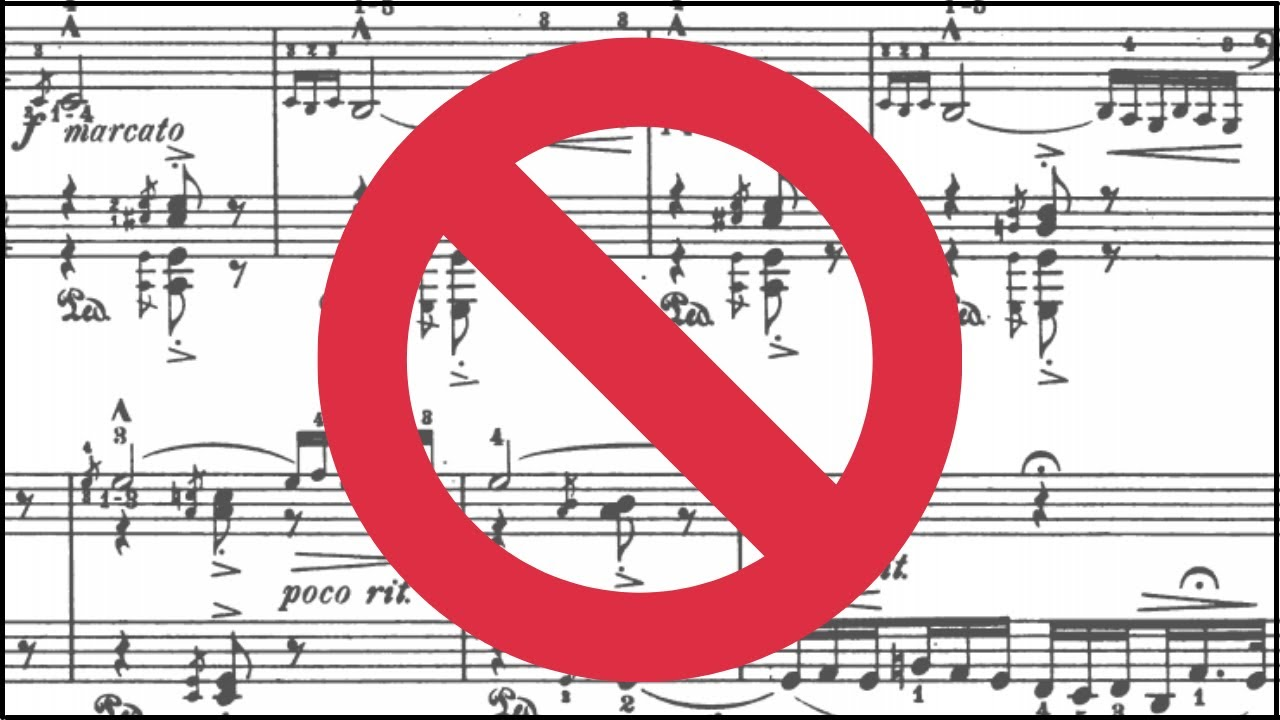
Personalising Repertoire
By all means play classical/scored music strictly adhering to the printed page. I propose, as a kind of technical exercise and self-discovery experiment, to see how you play the piece without the music! Use your ear to find the melody
- Read More ...
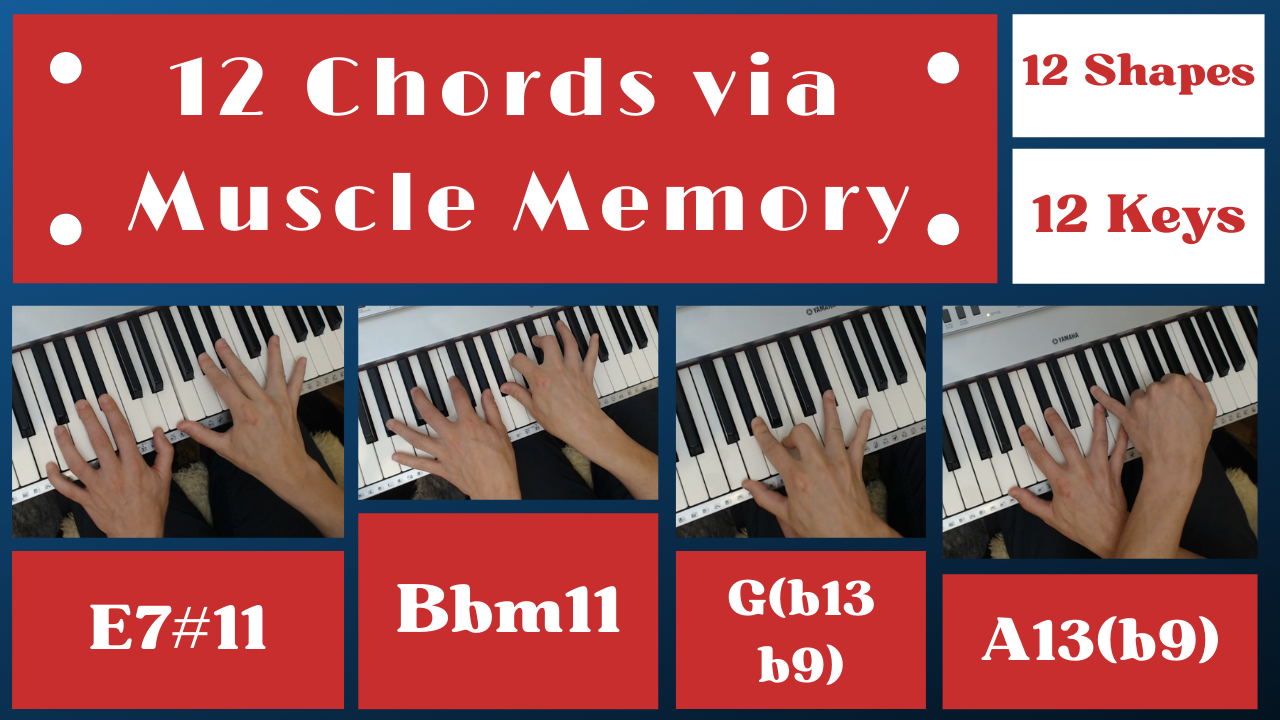
One Example for Each Key
I thought it would be quite nice for you to know some of my go-to shapes for chords in keys based on finger memory; chords I hit mindlessly. Of course I have a few more in each key but this is
- Read More ...

Bite-Sized & Personalised!
This is such a beneficial game: spontaneity, internal piano, chords, melodies, personalisation galore! Choose how many notes your melody will have (improvisation or composition) - I did 8. Then choose random numbers between 1-7 (representing the major scale).
- Read More ...

Be Rhythmical! (Part 2/2)
Hopefully you've watched part 1 and got the melody and chords down. Herein, I propose to start with 1 note improvisation per chord, moving up to to 5 notes, then making your own melodies using these smaller blocks. Consider the regular
- Read More ...

Embellished Jazz Chords & Melody (Part 1/2)
Isn't She Lovely is a standard 16251 up a fourth jazz-based chord progression... it just happens to have a funkier rhythm and more modern-sounding melody. It's therefore very easy to learn to play! After a quick performance, I take
- Read More ...

What Do Your Hands Wanna Do? Part 1/?
Following many requests and comments, as part of my variety in content, I hereby introduce the first of I don't know how many videos to help you 'Play You'. This first video encourages you to just choose a chord type
- Read More ...

Precision, Endurance & Speed Guaranteed!
I have always enjoyed doing technical exercises. Sometimes, you just need to give the repertoire and theory a break and just go all in, like Liszt did when young and get those fingers working up a sweat! Herein are my favourites.
- Read More ...

Master the Progression, Play How You Want
There are quite a number of tutorials on how to play note-for-note this piece, along with scores of arrangements you can buy and learn note for note. That's great so learn Time like that if you so wish! I am
- Read More ...

Brain-Breaking Two-Handed Precision Exercise
You will do this exercise eyes closed, as often as possible. Use different chord types and go through all keys chromatically. You choose a chord type, choose which hand goes first, then the other hand follows in a mirror-like fashion in
- Read More ...
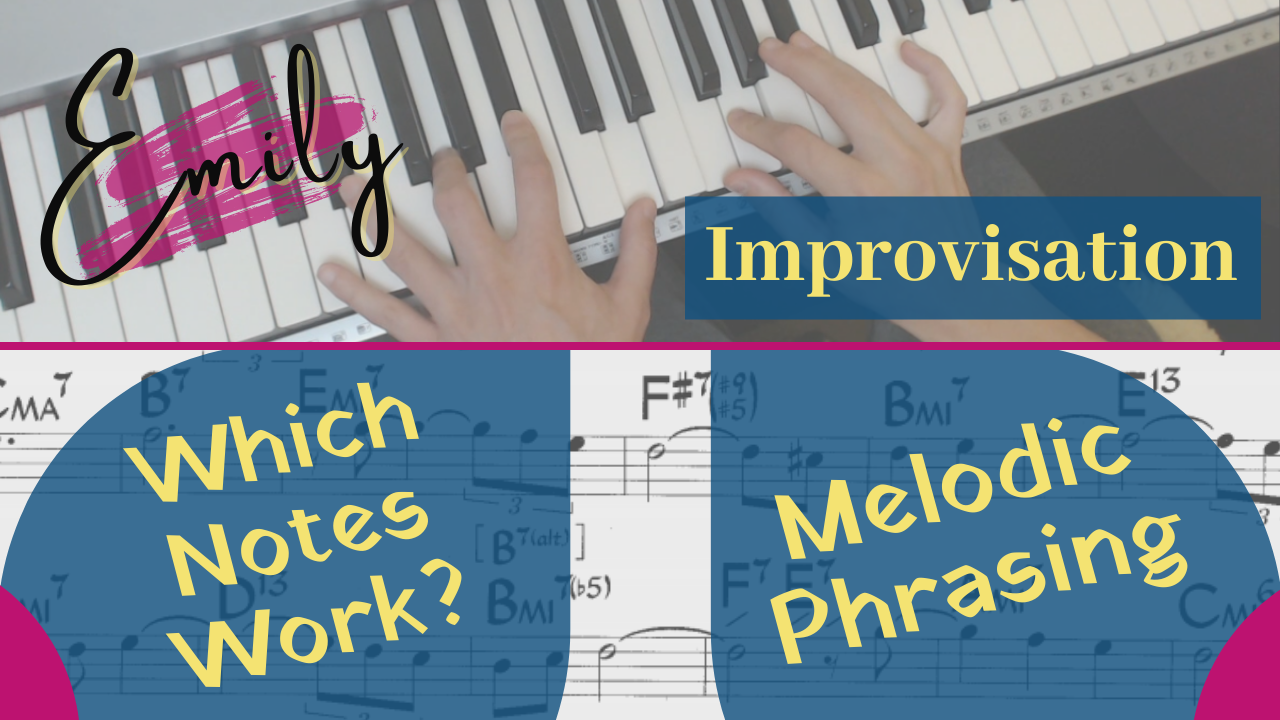
Want to Be Melodic?
What I discuss in this video can be applied to any jazz repertoire so I hope you'll enjoy it even if you don't wish to learn this song. I progressively give ideas on improvisation as I go through the chords
- Read More ...

Emily's Jazz Progression & Performance
As I say in the video, I don't just learn these songs in 5 minutes. It takes time to listen to it a lot (internal jukebox) from different performers, have a look at the lyrics, orientate the melody to the master
- Read More ...

Internal Jukebox to Mastery
Emily is an underplayed, beautiful jazz song made most famous perhaps by Bill Evans but many recordings exist (see below). As always with these miniseries, we get the melody down so we can deal with the chords (in part 2)
- Read More ...

Upper Chord Structure Experiment
Many ask me abut fancy chords. Here is my response in video format. Basically, there are 7 triads (major, minor, dim, augment, sus4, sus2, m+5 (it works)) which you apply to the 6, b7, 7, b9, 9, #9, 11,
- Read More ...

At the End of the Day, Play You!
Enjoy the timestamps for this video and come back to your favourite parts when you wish. It's full of ideas, hence the length yet is not overwhelming really. It's basically my thought processes and some ideas of how to play the
- Read More ...

Avoid Muscle Memory! (Full Performance Included)
In this miniseries, we're looking at the melody of Misty. As with all jazz repertoire, get it on your internal jukebox, find blocks of melody and patterns of it for easier memorisation, then play little games to master it. Herein,
- Read More ...

Applies to All Jazz Repertoire
It's always nice to start a song in a more interesting way than just playing the opening note, especially the Great American Songbook repertoire so this video gives a load of examples for intros and outros, including a bluesy idea, semitone
- Read More ...

LH & RH Performance Ideas for Fly Me to the Moon
Now you know the melody from part 1 and the chords from part 2 and have listened to lots of versions so it's very clearly on your internal jukebox, now is the time to start personalising the song. I propose a
- Read More ...

Learn Blocks, Not Individual Chords
Having got the melody down from part 1, or mastered the melody of whatever piece you're working on, move on to the chords. You need to master jazz repertoire in blocks: 6152... up a 4th... floating 251 (explained within), etc.
- Read More ...

A Few Reinforcement Ideas
Nothing too overwhelming; just get the melody down and play around with it. Play it with the left hand. Play it as octaves. Try it in a different key. Understand that this tutorial applies to all jazz repertoire so you'll
- Read More ...

Chromatic Spontaneity
Two little ideas which will help you with octaves and chord inversions and chromatic rapidity combined with chord naming in different keys. I'm always pushing you to learn new chord types, especially in new keys, as well as getting comfortable playing octaves so I hope this proves useful.\n

Standard & Complex Chord Variations
You need to know 251s. You need to know your major scales. This challenge will make sure you get both down! Play the 2 5 starting from C, Dm7 and G7, then when you land on the 1, play
- Read More ...

Any Chord Type, Ascending & Descending
It's all in the octave jump precision and applies to any chord, up or down, either hand. I break down getting the chord shape down first in both hands, ascending and descending, then playing it with that octave jump. I give many examples of chord types in different keys to constantly reinforce this octave jump precision.

Precision on the black notes is important. Herein, find three ideas to become a black note master. Eyes closed recommended. First is getting familiar with playing all inversions of the block of 5 black notes, followed by doing them
- Read More ...

No, You Don't Need to Memorise Them!
There's this thing going around which convinces you that you need to remember chord inversions. You don't. Once you know the basic chord structure (1357 and alterations thereof), combined with major scale mastery, you can find the notes needed immediately,
- Read More ...

LH & RH Enhancements - 3/3
You've watched part 1 and 2 and are ready for part 3 in which you will take your left hand on a chromatic walk from time to time and your right hand will play block chords and drop a semitone on
- Read More ...

Taking the LH & RH Further
Part 1 is necessary to be able to handle this video. I take you step by step through developing the left hand, then the right with variations, then bringing them both together, with some exercises to boot! After these two videos, I promise you'll be able to tackle all the ragtime music you wish to play!
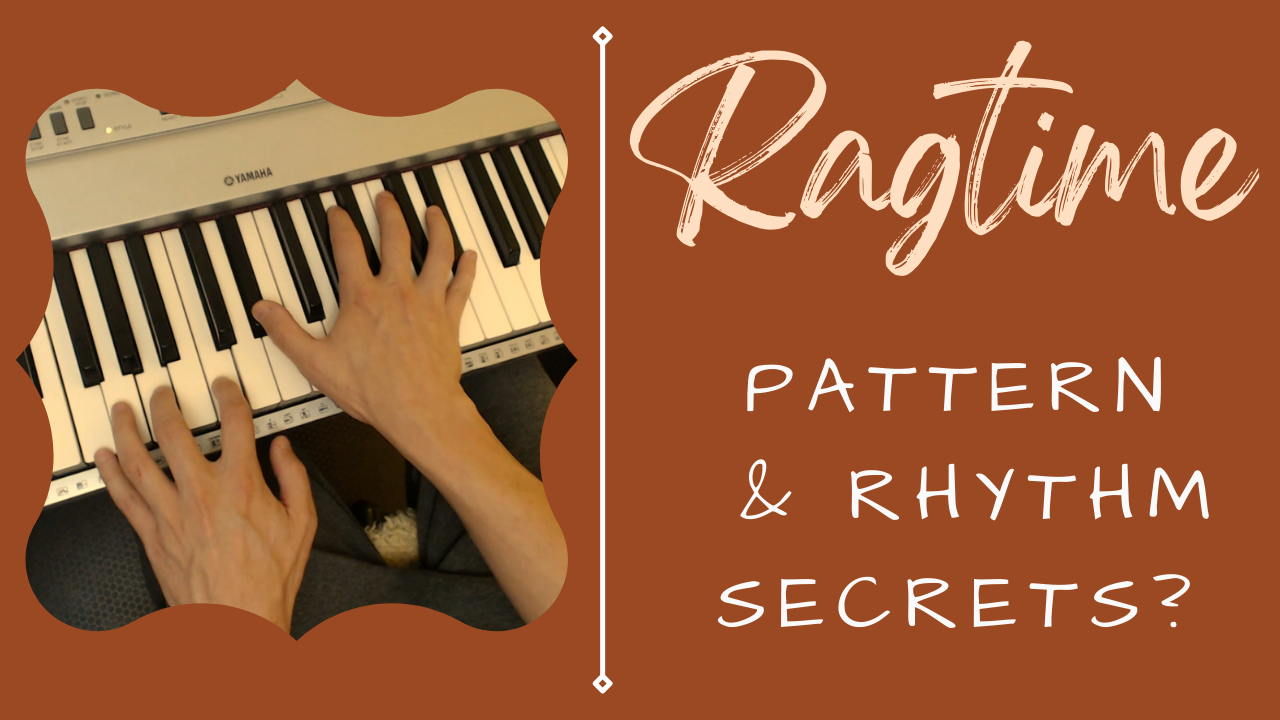
The Straight & Swing Feels
Often, people think ragtime is played straight but it's often swung, as Scott Joplin himself would do. You must get this rhythm/pulse down first and then do the technical exercise I provide before moving on to Part 2 or even hoping to play any ragtime repertoire or improvisation. Good luck!
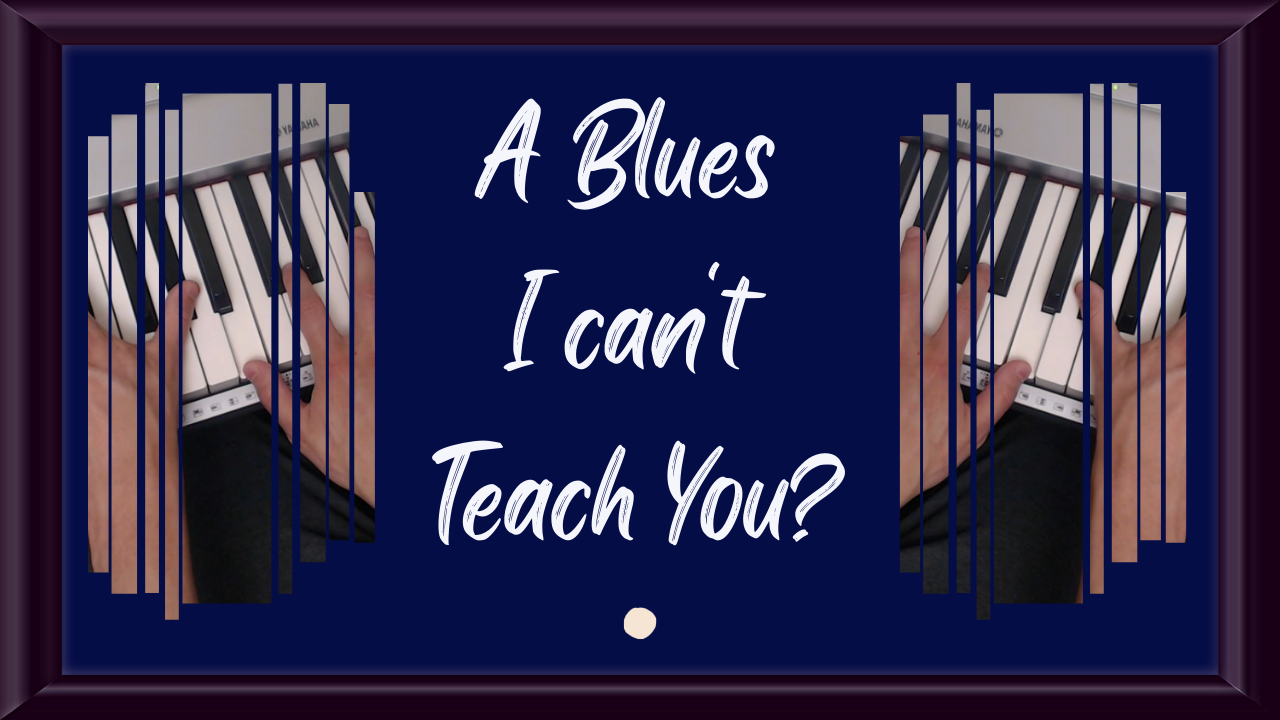
Sweet Chords & Melody Notes
It's a good idea to practise the feeling of the 12 bar blues and that requires a lot of listening. I propose a nice version where you play the 4 chord on the second beat and then end with a
- Read More ...

Six Ideas for Eyes-Closed Practice
Although these exercises can be done eyes-open, I have devised them for eyes-closed purposes only in this video. You will benefit greatly in terms of precision and comfort, not to mention some major scale reinforcement and chord type practice, as well
- Read More ...

Eyes Closed is Best!
You need to know your chords so instead of playing them in a boring dry way, why not take a known melody (I demonstrate 3) and play the melody as the chord you've chosen? It forces you to know the melody
- Read More ...

Reinforce the Jazz Progression by Composing?
Just a light-hearted attempt at helping you drill the jazz chord progression found in almost every Great American Songbook piece by having you write your own! Cole Porter's music very often follows this progression so, minus the lyrical and melodic genius
- Read More ...

Personalise Them for Your Journey!
Practormance and exertoire both come from my Water Pianism philosophy. They come from a need to use a performance as a practice opportunity and an exercise as a (mini) repertoire (performance) opportunity. This was the best way to combine
- Read More ...

Play You!
I'm always trying to encourage you to master major scales in the least boring way possible. Here is a good one which allows you to still have the freedom of playing how you want: pick a note value, start from
- Read More ...

Interval Mastery is Paramount!
It may seem simply but that's the trap: it isn't! Mastering all finger feelings over all intervals is the foundation to piano music. Everything ever written, every technical exercise, every improvisation requires comfort in intervals, yet many students just neglect this
- Read More ...

Hand & Finger Independence & Precision
Playing the piano is all about fingers-on-notes and intervals so any exercise which gives you more practice to refine your precision, comfort and touch is a good exercise... like this one! Finger the major scales using 1-5 fingers, which forces you
- Read More ...

Both Hands Non-Stop
Eyes closed, this is a great idea. Let your fingers naturally play all major scales but in any order (within the key) that you want, in-octave and multiple octaves. Then try it with chords. Choose your own rhythm and tempo.
- Read More ...
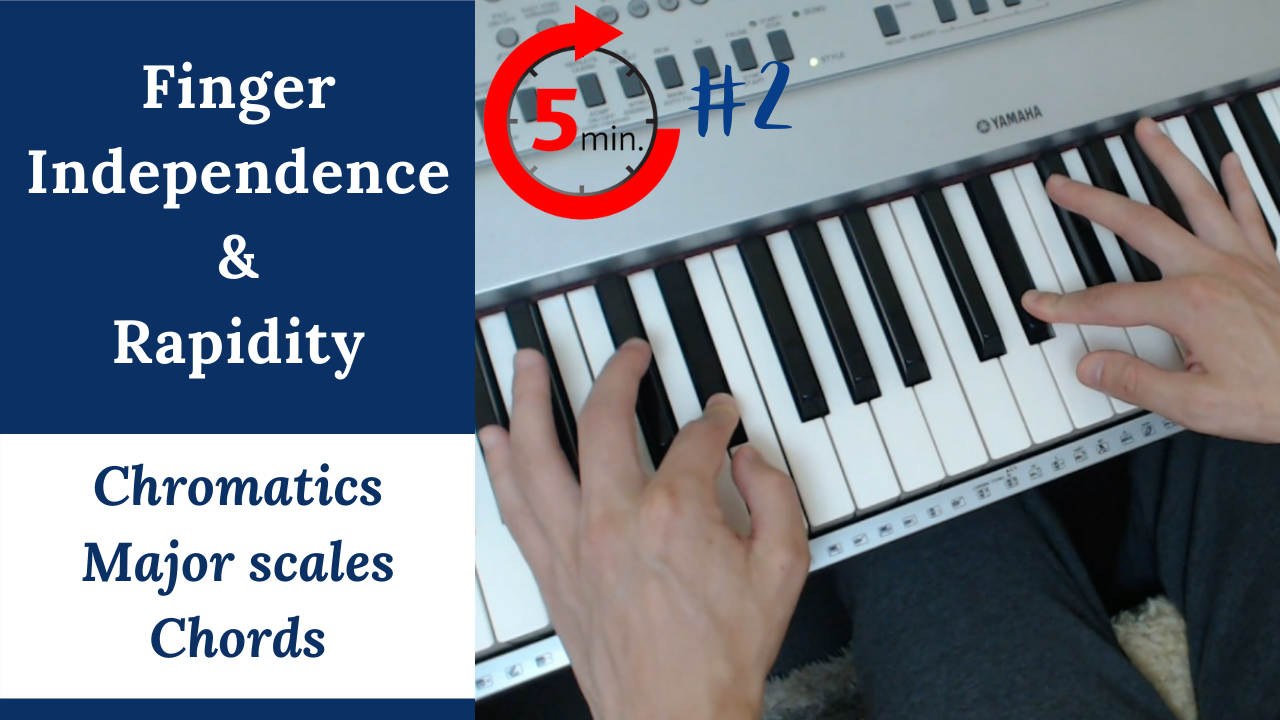
Variations on the Theme
This is a great technical exercise to do because there's so much variation available, along with the inherent development in finger independence and precision you acquire. I recommend doing this many times a week for as long as possible, eyes
- Read More ...
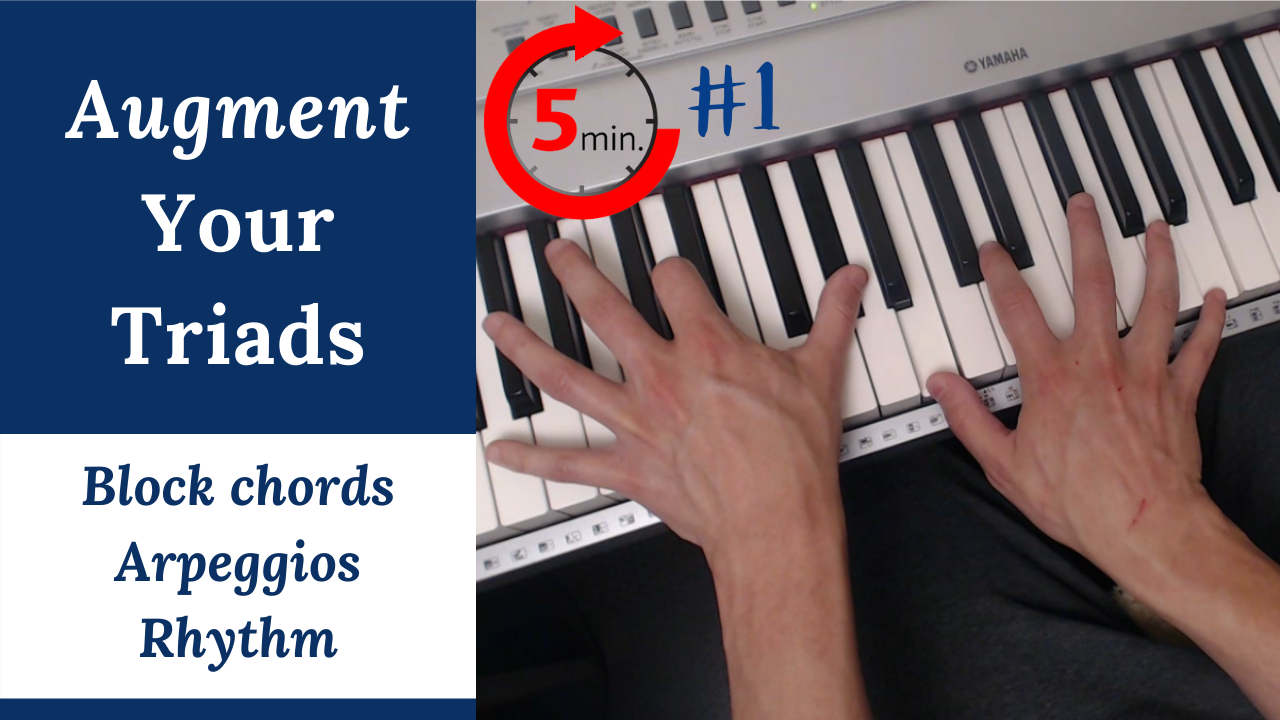
Perfect for the Cycle of Fourths!
Video 1 in the new Short & to the Point Playlist, as requested. Looking at the augmented triad and playing it in different ways as we go around the cycle of fourths. Why? This is the perfect chord for 'going up a fourth' which is a very, very common movement in chord progression theory.

Fingering, Scales & Internal Piano
Simple game. People like games. Using the major scale or chromatic, choose a note then a chord type to play when you land on that note then play it how you want! Block chords, rapid arpeggios, bouncing around, octaves...
- Read More ...

Just Go For It!
Polyrhythms are hard. You may well be able to individually do what each hand is required to do but bringing them together, at speed, without thinking and eyes closed, is another story. Really do come at these ideas with
- Read More ...

All Keys, Be Spontaneous!
Playing the piano is 100% about intervals and your accuracy in playing them... so why not get used to playing spontaneous intervals in random keys while varying dynamics and tempo? That's what this short video demonstrates. I hope to
- Read More ...
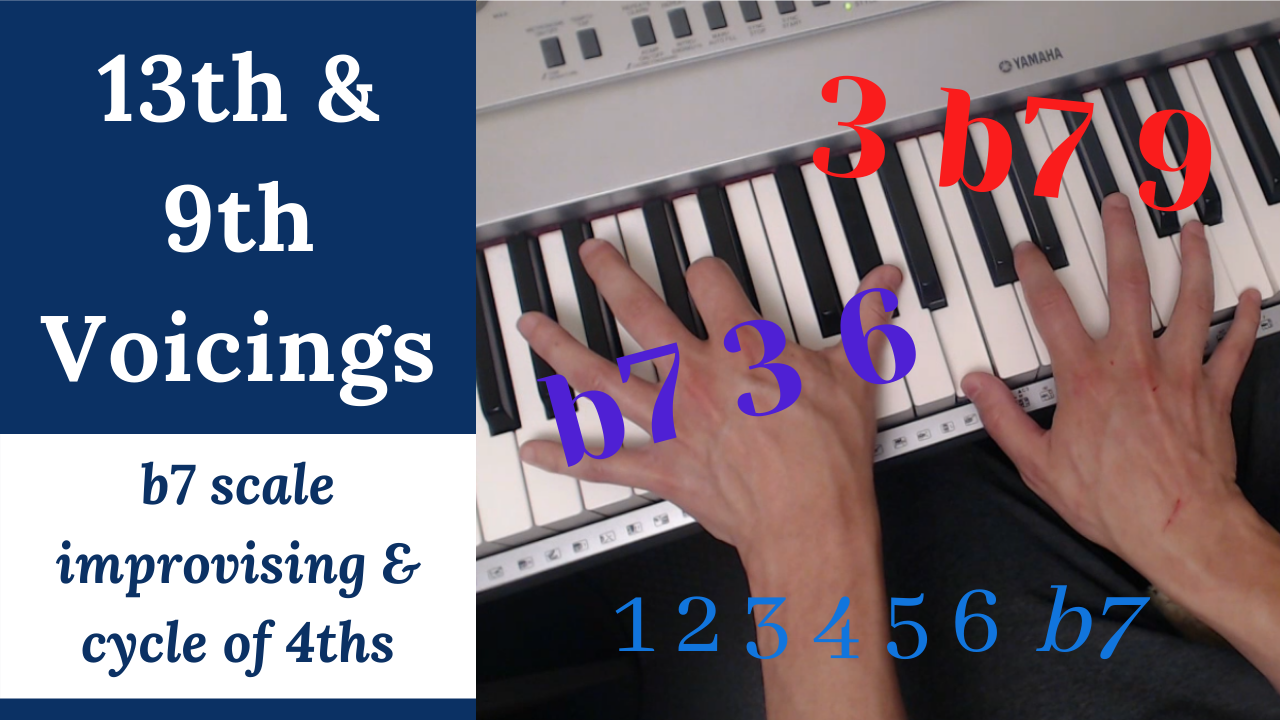
Alternate Keys for Mastery
Left hand plays 379 or 736, right hand plays the major scale with a b7. That's it. Alternate between two keys moving around the cycle of fourths to drill the shapes and play with the major scale and its
- Read More ...

Own Composition (Duna Autumn)
People like me playing stuff so I thought I'd do so with the intention of letting you learn something too instead of just watching. The chords are quite complex, the techniques quite advanced but I'd like you to take this
- Read More ...

I Can't Give You Anything But Love (3/3)
It doesn't matter what jazz piece you're trying to improvise over - it's all the same chords basically. This song, as you know from part 2/3, is just a 16251 with a floating 251 to the 4. Herein, I demonstrate
- Read More ...

Getting the Chords By Ear - 2/3
The main take-away from this video is to master the sound and feeling of the 16251 progression and the floating 251 onto the 4th... simply by playing them yourself and listening a lot. This piece is a very easy one
- Read More ...

I Can't Give You Anything But Love - 1/3
In part 1, follow me as I simply apply my internal jukebox to finding a melody thanks to many listens of this very nice jazz tune. It's very easy for beginners too, not just because of the melody but the
- Read More ...

Alternating in Various Ways
Nothing overwhelming, just an idea to get your fingers moving at the piano and playing with rhythm and precision. Also, helping to learn new chord types in lesser used (by you) keys. Full of demos for: walking bass, stride,
- Read More ...

Romance - Bars 11-19 - First Time at the Piano #piano
Here we go again! It's a simple process: get the piece on your internal jukebox (know it perfectly in your mind), then analyse the score for theory holes, then start mastering a few bars and drilling them on your internal
- Read More ...

Melodic Chord Mastery Ideas (2/3)
Having watched part 1 so you understand what the scale is and can understand where the two chord types come from, herein is an exercise (two but they're similar) which will help you, eyes closed for natural fingering, to play the
- Read More ...

Romance - Bars 1-10 - Internal Piano to Real Piano
This is not so much a tutorial for the piece as it is a demonstration of my process and progress, in almost real-time, of mastering a piece away from the piano and then, for the first time, playing it in the
- Read More ...

Ten Rapidity-Based Exercises
It was said of Franz Liszt's frighteningly powerful and astounding technique that despite it, he never made you feel that he was showing off or trying to 'play fast'. Practising fast can be a bit of fun but it's also
- Read More ...

It's Just Two Chords - 1/2
I wanted to make this in two parts so that you can get the theory down before getting into technical exercises to actually practise it. It's not as complicated as it seems, this Barry Harris diminished 6 scale. There's two
- Read More ...

1-5 & 6-7 of Major Scale (Liebestraum Performance Demo)
Dynamic control is challenging. Herein, using the major scales as a foundation, play 2, then 3, then 4, then 5 notes of the major scales as lightly then as loudly as possible, feeling the extremes. Then, identify the middle ground.
- Read More ...

A Re-harmonisation Game
Using Fly Me to the Moon, I propose to choose any chord containing the melody note (of any melody you wish, of course, whether you know its original chords or not) and master that random progression. Don't worry about theory,
- Read More ...
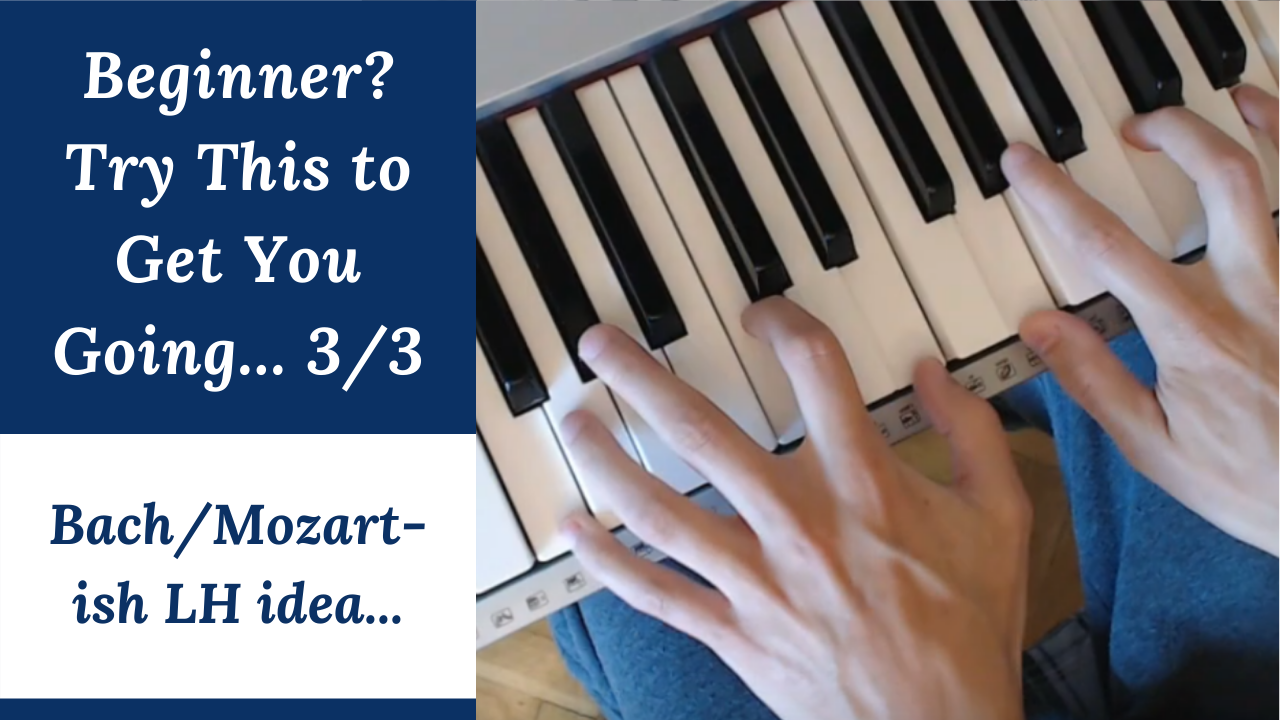
LH 1 5 3 5 Pattern
Final (?) video in this little playlist giving you yet another left hand pattern to get into your bones while the RH only worries about 1234(5) of the major scale. Reduce conscious interference, close your eyes and do your best
- Read More ...

LH 1 5 8 3 Pattern
Sometimes you just want to play something. In this second of three (probably) videos, get a nice left hand accompaniment with a very common technique: 1 5 8ve 3. Then, add just the first four then five notes of
- Read More ...

LH & RH Chord Idea (w/ Pedal)
Sometimes you just want to play something. In this first of three (probably) videos, get a nice left hand accompaniment with a simple two chord position to share between hands. Then, add just the first five notes of the
- Read More ...

Quick Jazz Progression & Melody Run-Through
I just wanted to try to remember an old song but share the process with you. Once in on your internal jukebox, you can identify the melody in any key numerically or by finding its pattern through the major scale
- Read More ...

Free PDF Sheet & Article
Perhaps my most important video. I wrote an article and created a PDF for you to help get everyone on the same page, to get real about what you truly know and what you can truly do, no excuses.
- Read More ...

A Challenging Memorisation Game!
It's very important to keep practising chord memorisation so this game really challenges this skill. Simply, you pick a major scale and then for each note of it, find a chord which contains that note (but it doesn't have to
- Read More ...

Try This Little Personalisable Game!
If you can memorise random chord progressions with a bit of practice, you can memorise the regular chord progressions very easily which appear in most repertoire! It goes like this: pick how many chords in your progression; pick that many
- Read More ...

Actually, No You Don't!
A few minutes a day on this exercise will literally rewire your brain to stop thinking about LH/RH and honestly, magically, help you overcome co-ordination problems. Herein, I demonstrate what can be done with any chord type in any key
- Read More ...

An Improvisation Philosophy Exercise
Even if you can improvise quite well, this could still be useful. The idea is that you take two notes, one from each chord (of a two-chord progression) and find as many ways to play from one to the other
- Read More ...

Now a Useful Technical Exercise for You!
When I was about 6, I learnt this song for fun, not really touching a piano again for almost a decade. It came to me that the left hand accompaniment can be used as a great background to so many
- Read More ...

'Again' - Part 2 - Easy Jazz Piano
You don't have to want to learn this particular song to benefit from this video. The 6251 progress is the foundation of jazz and with it, so many songs become instantly accessible. This is in the key of G but
- Read More ...

Again (Part 1)
As requested, a lovely melody. I discuss how I listened lots to get it onto my internal jukebox, found the melody and recognised shapes. Dissect the melody into bite-sized bits. I don't in here but by all means reinforce
- Read More ...
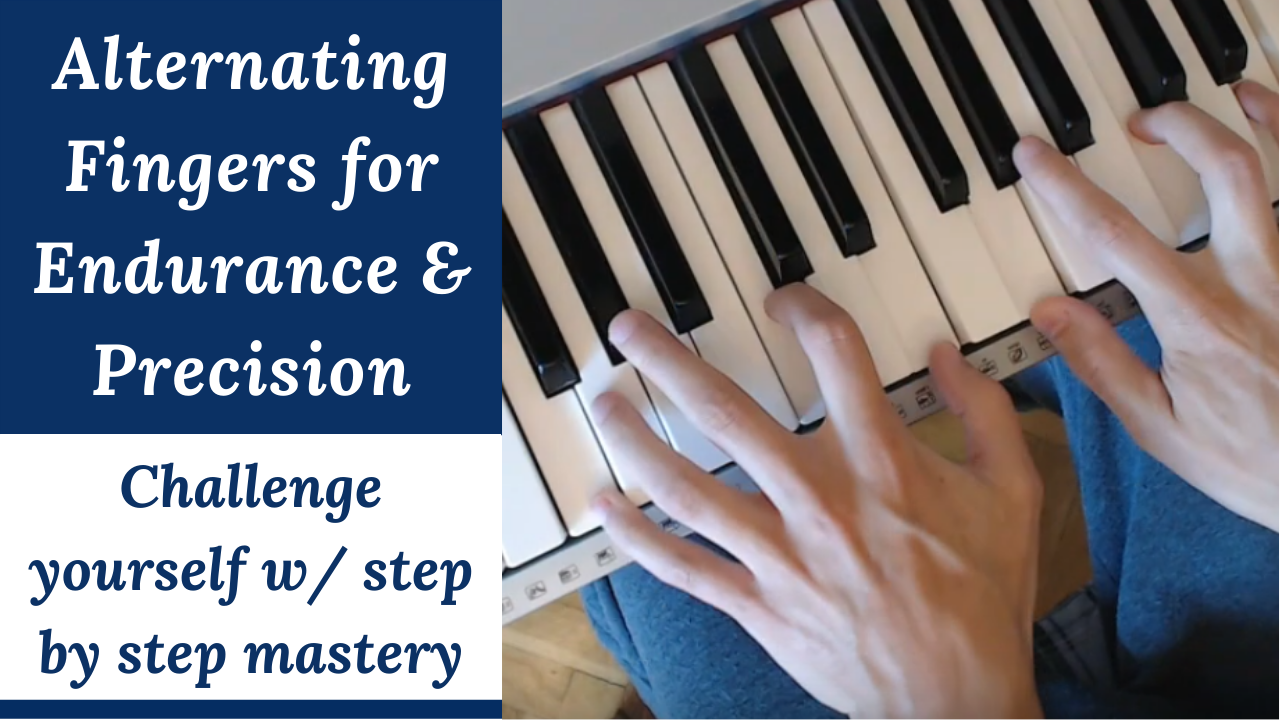
Four Steps to Mastery
I love doing these. You should too. They have so many benefits. Aside from doing it, be sure to close your eyes, find your natural limits and use different keys. Sit high enough and far back enough to avoid
- Read More ...

Flow & Stop Thinking!
Above all the theory and technical exercise videos I make, the most important philosophy is the removal of conscious interference. This can mean: don't apply too much theory and get caught up in it, as well as being able to do
- Read More ...

Chord-based, Finger-Precision Goodness
You're allowed to use the pedal in this one and go for a legato touch. The idea is to create pretty sounds using both hands to play certain chords. It's not as easy as it looks and so is very recommended
- Read More ...

Not Clickbait, Just The Truth!
The basic truth is, no matter what theory you know and what licks you acquire and can play in 12 keys, if you don't play You, you're not playing the piano, you're regurgitating. Herein, I demonstrate quickly the simply procedure
- Read More ...

Making Them Melodic Over Changes
I wanted to get you familiar with modes a bit before diving into the song since it doesn't matter what the song is when improvising because the logic is the same: play notes of the chord, throw in some modal spice
- Read More ...

Drilling a Progression
Part 1 was for the melody. This is the chords. You don't need to want to learn this song; it's about the process you would do well to adopt when acquiring any repertoire: master the progression bit by bit,
- Read More ...

Melody Line in Any Key
Once a piece is on your internal jukebox, you can use it while finding the melody. The key doesn't matter; just find the melody somewhere and go for it! Then, identify its note values in the master key and
- Read More ...

It Takes Minutes, Not Months! Two Exercises to Help.
I fear people give up too quickly and/or don't believe they can achieve a certain level of fluency or dexterity. Well, there are those who think they can and those who think they can't - and they're both correct.
- Read More ...

Budapest Theme Part 3/6 - Own Composition
I never knew ten years ago that I'd still be here, or that I'd start composing and have a YouTube channel with 110,000 subscribers but I knew in some way I'd be helping people because life is about service. I'm
- Read More ...

Performance Tips & Personalisation #jazzpiano
I take you through my confirmation of the melody, the chords and share some ways you might perform it, including my own natural reactions to playing it spontaneously. My intention is that you'll follow a similar path when mastering your own jazz repertoire by watching part 1 then this.

Finding Melody & Chords by Ear #jazz #piano
I wanted to go from not being able to play a song, to knowing it at least in melody and chord form before in part 2 refining it and personalising it. Follow me in this longer than usual video on
- Read More ...

Jazz Piano Solo Accompaniment Idea #piano
You can play stride. You can play walking bass. But what about just accompanying octaves? It works. It sounds good. Consider mastering this content using regular 6251 progressions, chords to your own repertoire or simply the cycle of fourths. And remember, it don't mean a thing if it ain't got that ssswing!

Keep It Going! #piano #jazz
I have a few videos on improvisation (listed below) but this is more about blending the main ideas of improvising into a 'constant stream' which helps with fluency, the ability to change between keys and chords and forces you to become
- Read More ...

Getting Melodic Movement w/ Chords
A common stylistic trait is to play a triad with an octave and move that octave around without moving the central two notes (major or minor third and perfect or flattened fifth). Herein, I demonstrate what that looks like and how to introduce a left hand accompaniment.
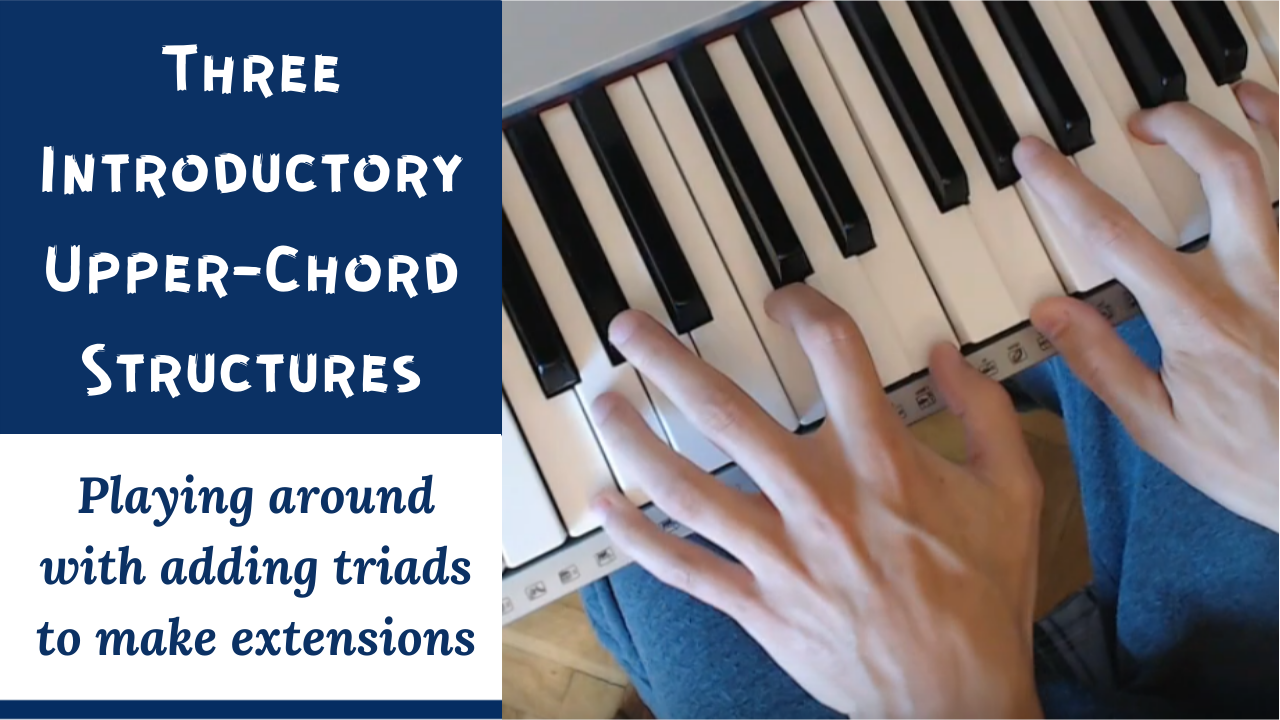
Introducing You to the Idea with an Exercise
Upper chord structures is the term used when you apply a 3 or 4-note chord any notes of the chord the left hand is playing to get some fancy extensions and nice jazzy sounds. Herein, I propose the m7 on the 3rd, a whole diminished on the b9 and a major triad on the 9th.
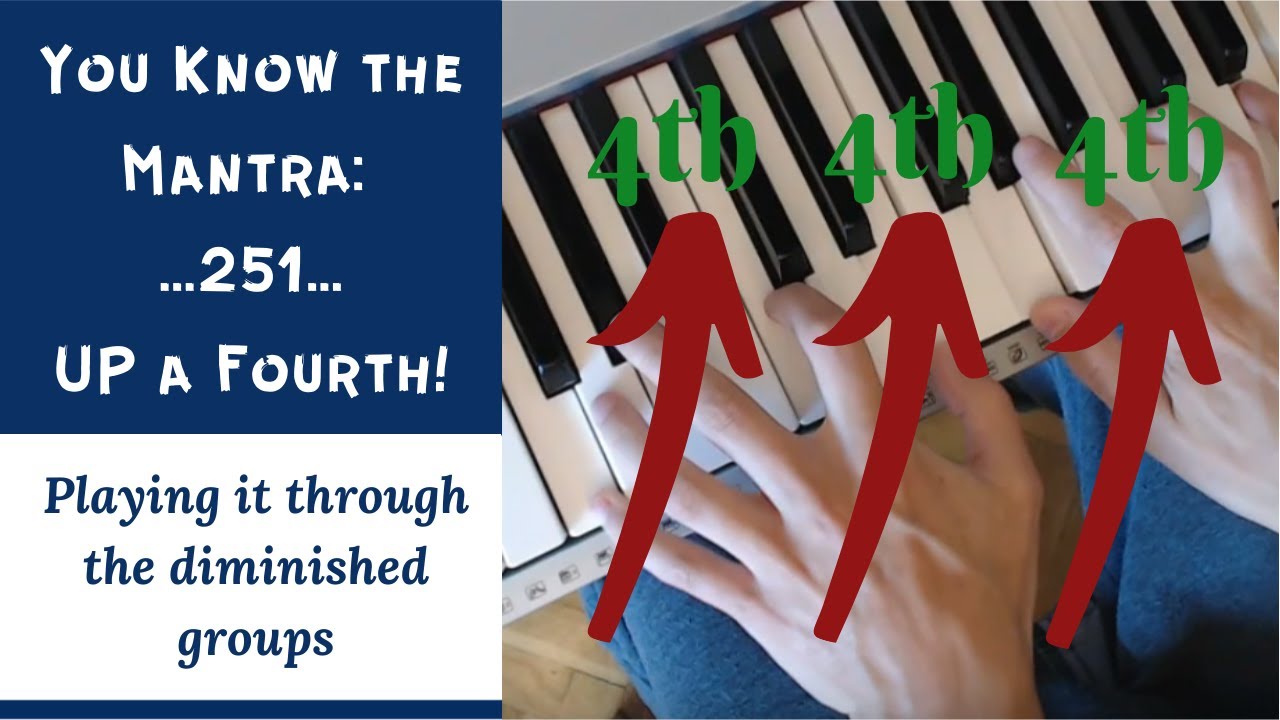
Using the Diminished Template
A nice connection I became conscious of whereby the 251-up a fourth logic, if you make the 4th the new 2 (of the next 251), results in playing the notes of each diminished group. It's a good exercise, with personalisation
- Read More ...

A Sample Session to Mimic (w/ Voice Over)
Shapespearean actors don't come out on stage and suddenly speak their lines and act without practising and honing. They have spent months and years memorising lines, learning how to control their facial expressions and body movements. They've learnt how to speak
- Read More ...

Chord Embellishments & Progression Exploration
All christmas songs can and should be seen as 'jazz songs' despite their common theme. Herein, I wanted to share my journey through this song and how and why I chose certain chord varieties. It is very recommended to find you own chords but be sure you know the song very well on your internal jukebox first.

A Precision & Endurance Exercise for Both Hands
All christmas songs can and should be seen as 'jazz songs' despite their common theme. Herein, I wanted to share my journey through this song and how and why I chose certain chord varieties. It is very recommended to find you own chords but be sure you know the song very well on your internal jukebox first.

Removing Conscious Interference & Other Benefits
Some of my most popular videos are exercises which don't only challenge your fingers but your brain too! This video does just that. As always, mix and match, personalise and try to keep your eyes closed as often as possible. Aim
- Read More ...

One Exercise Using Chord Types and 251s (LH/RH)
Arpeggios are a nice improvisational 'device'; they can connect parts of a melody, fill in dead space or be themselves used as a kind of flourish here and there, not to mention being a melodic phrase themselves, so it's nice to
- Read More ...

Chord Progression Reinforcement Exercise
You have the piece on your internal jukebox, you've dissected the chord progression, now all you need to do is reinforce it and convince yourself you know it so you can play around with the tune as you please. This
- Read More ...
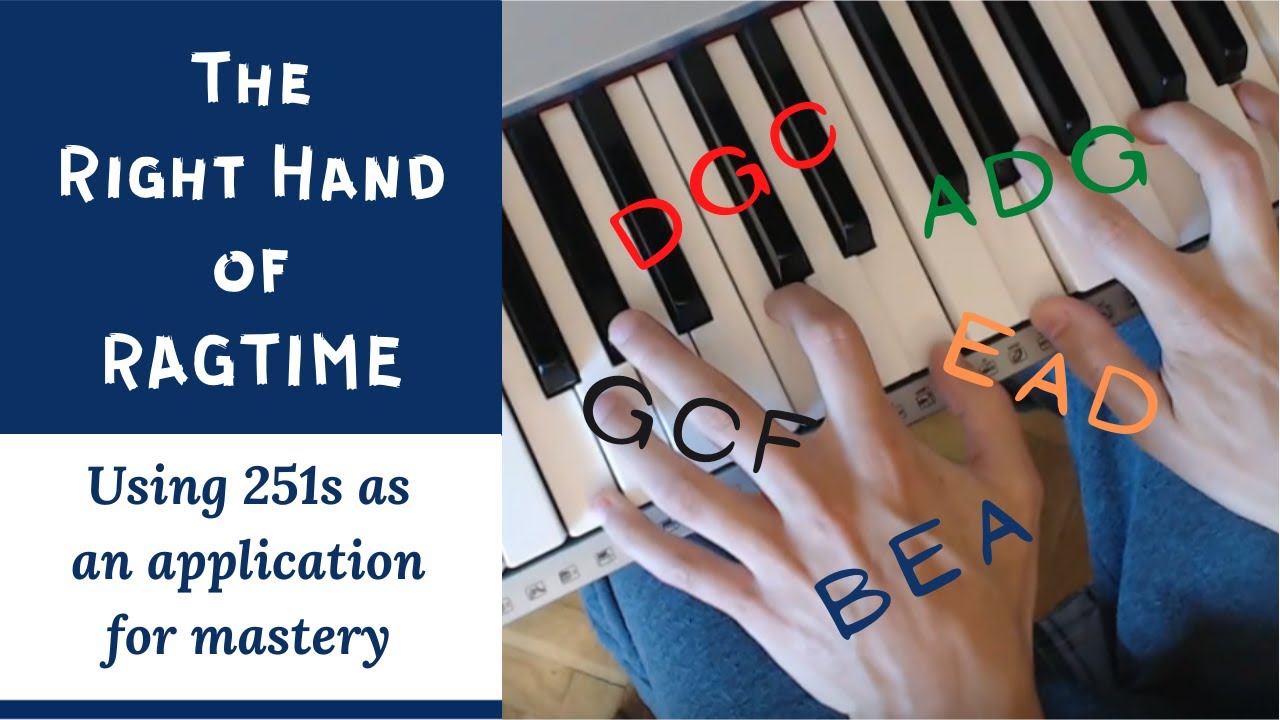
Mastery Through 251s w\/ Left Hand Stride
Ragtime is surprisingly one of my most searched keywords yet I only made a tutorial for it 5 years ago and then a tutorial about 2 years ago focusing on the right hand doing stride to help separate hands and overcome
- Read More ...

Probably For This Reason...
I started 21 years ago and the first song here, Black and White Rag, was the first thing I remember being able to play. I was able to get the left hand down quite easily but it did take a
- Read More ...

Using Chords to Master Touch - A Technical Exercise
Playing staccato is very good for tendon strengthening, finger independence and precision. Legato is nice for expressiveness. Using the pedal with stacatto saves you from sounding too muddy if you play legato with the pedal. Herein, I propose
- Read More ...

Fancy Jazz Chords & Tritone Substitutions
The intro to this infamous jazz tune is not so often played. I listened to many versions online and msot go straight to the famous Section A. This was requested and I'm glad about it. It enabled me to
- Read More ...

Extensions, Embellishment & Improvisation - Part 3/3
Herein, learn how to play fancy jazz chords over this infamous Lisztian melody whilst also embellishing the melody. Then, take some tips on improvising completely over the chords. You are of course encouraged to apply part 1 skills (use
- Read More ...

The Space in Between & Note Acknowledgment
A lot of repertoire, especially Debussy (!) requires rolling arpeggios. The most commong problem is that the spacing between the notes isn't perfect enough so they sound sloppy. Herein, I provide a step-by-step process to help refine rolling arpeggios, at any tempo, and of course promote as always personalisation with the exercises
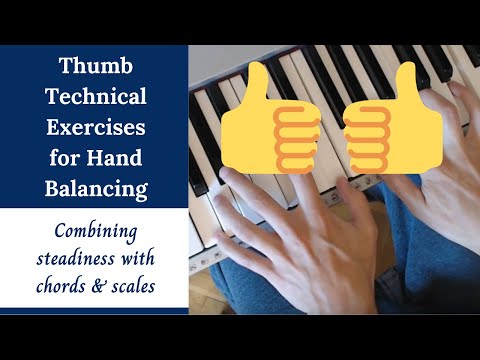
Chromatics, Major Scales & Chord Types
The thumb is often neglected in technical exercises, or thrown in as just another finger. Shame. The more you do thumb-only work, the more balanced your hand will become as a whole; you'll feel your other fingers become steadier
- Read More ...

Two Hand Exercises for Finger Precision and Independence
Finding your natural limit is important and encouraging: find the tempo at which you can comfortably do the exercises through many repetitions then increase BPM by 10. Rinse, lather repeat until you can do it fast and fluently enough not to need the metronome

Piano Cover & Tutorial - Step by Step Mastery
For this requested piece, I perform it then highlight how one might master the chord progression and rhythm. I then discuss bringing in the melody and enhancing it to fill in space. The chords are shown in the video
- Read More ...

Steadier Performance
It doesn't matter what the rhythm or time signature is if you can't feel your internal metronome. Herein, I show you the layered approach to 'feeling' and 'seeing' the rhythm frame in your mind and how to highlight certain parts of it at will. This will benefit your performances tremendously

Jazz Piano Tutorial
This video is how I went about learning the piece, including some more fancy chords and stylistic performance ideas. First, I got the piece on my internal jukebox by listenig to many versions. I then saw the chords on
- Read More ...

Jazz Piano Tutorial
The chords I used can be found on my YT wall or in my IG post. Otherwise, they're here for you: Am6 / F#m7b5 / Bm7b5 / E7(b9) // Am6 / F#m7b5 / Ab(9/b13) / G(9/b13) / Cm9 /
- Read More ...

Four Composition Methods to Try
1. Play random stuff at the piano without theory and write down/have program notate what chords/melody notes you end up settling on. 2. As before but with some theoretical confines: time signature, key signature, chord types, structure, tempo,
- Read More ...

Chord Shape Reinforcement & Endurance
First, take any two fingers and play the intervals of any chord in any key up and down over 3 octaves. Do this with one hand then try together. Of course emphasise keys and chords you don't know so
- Read More ...

Two Lisztian Exercises | Endurance is Key
You really need to spend more time doing one technical exercise to get the benefits of it. Consistency is also important. I don't want you to be playing lots of repertoire without making progress with dexterity, precision and fluency. Endurance is a very powerful way to develop these pianistic elements

The Key to Repertoire Mastery
Usually I talk about the 251 in repertoire but I realised it can also be used to apply new techniques to. This video gives you 12 ideas on how to play the 251 but as always, personalisation is key!
- Read More ...

Follow Me Note for Note
Sometimes, you just need to be forced to play something, no matter your level, so herein, I show you exactly what I might do when playing this song and you're supposed to copy it 100%. I break it down, say
- Read More ...

Modal Improvisation & Visualisation
I don't want you to go down the rabbit hole of 'muscle memory' playing, both in terms of scale fingering and chord types, as well as melody line mastery. By poking the above things with one finger, you confirm to yourself if you can really see, which means if you really know, the scale, chord or melody line










